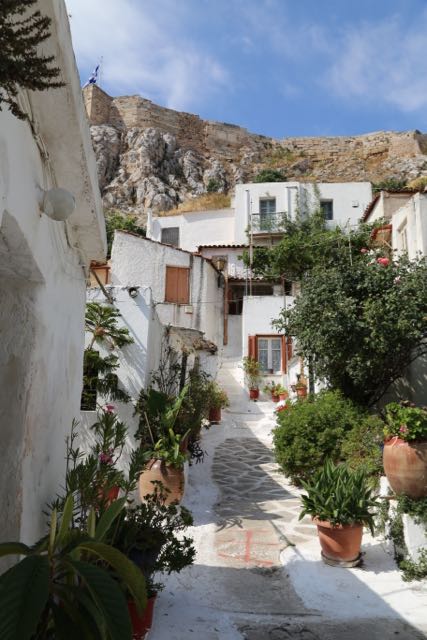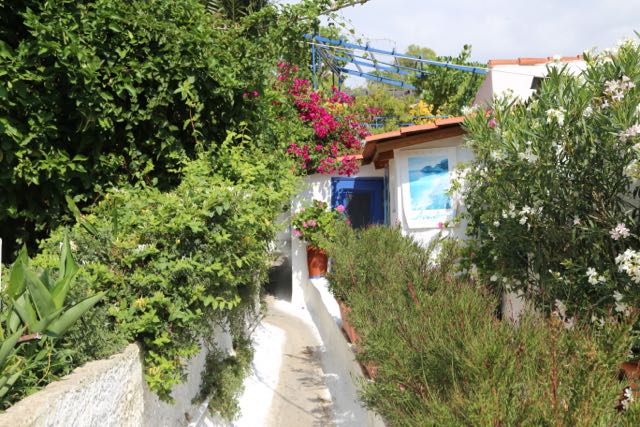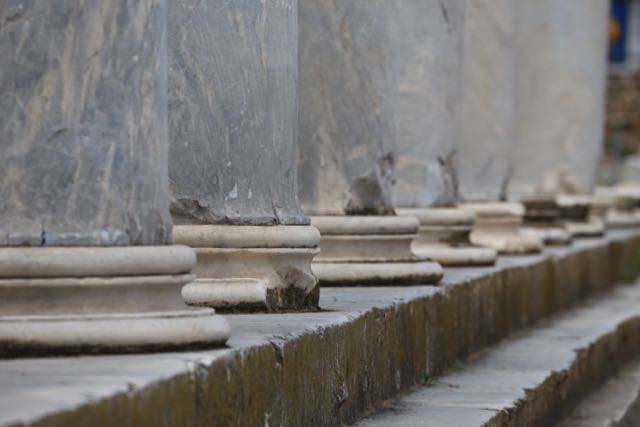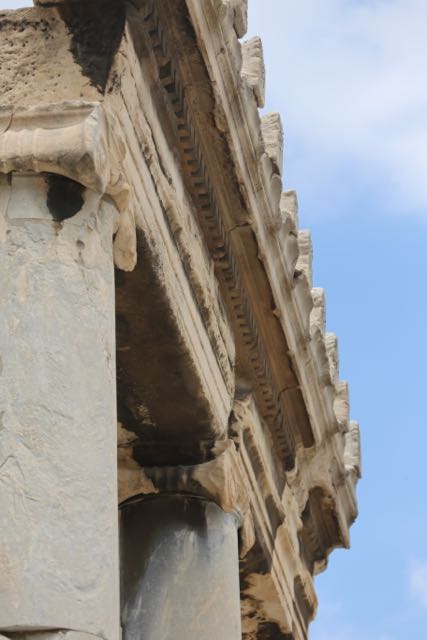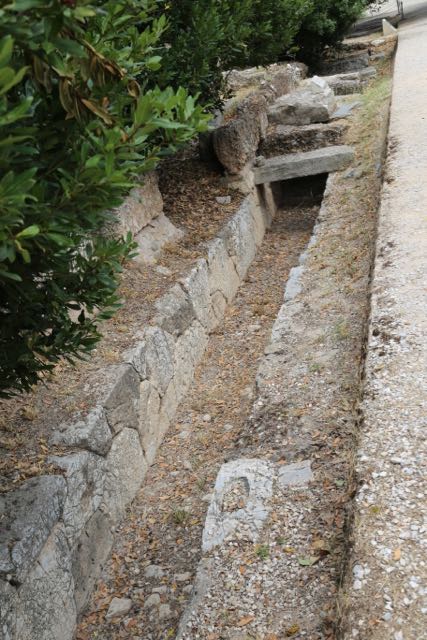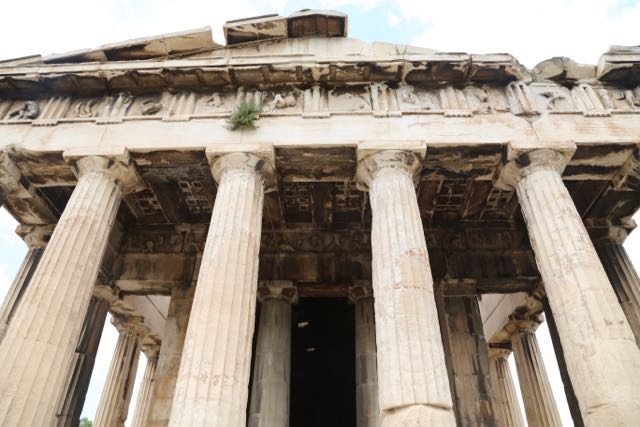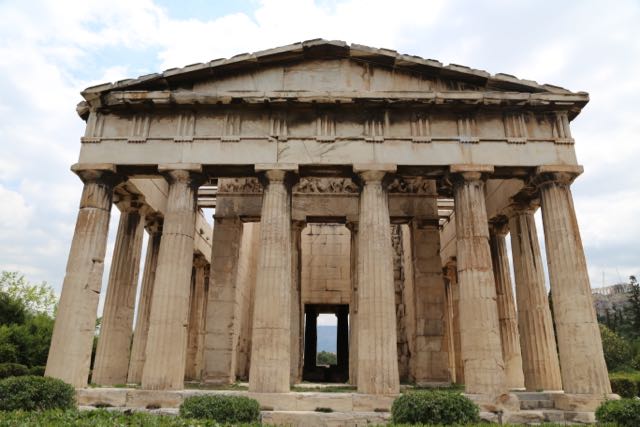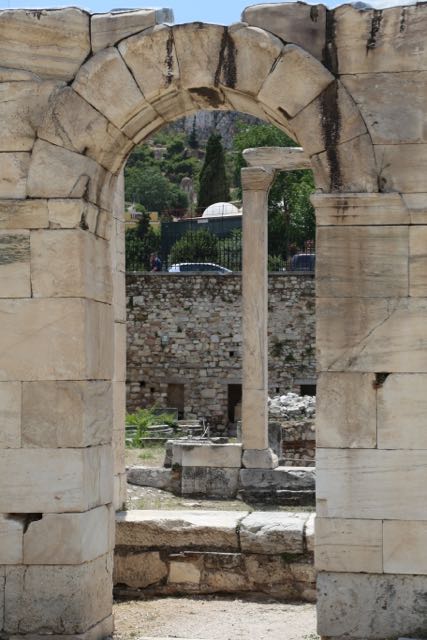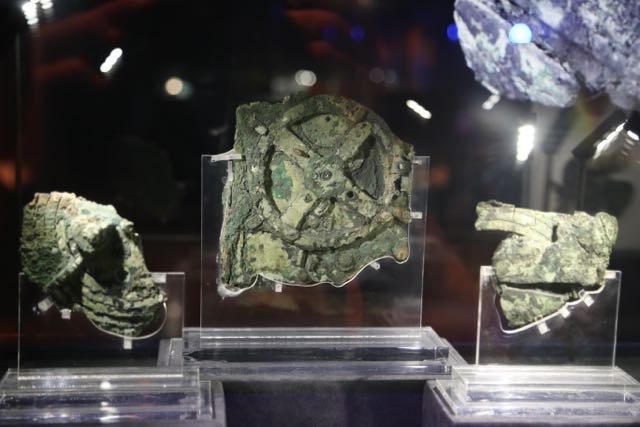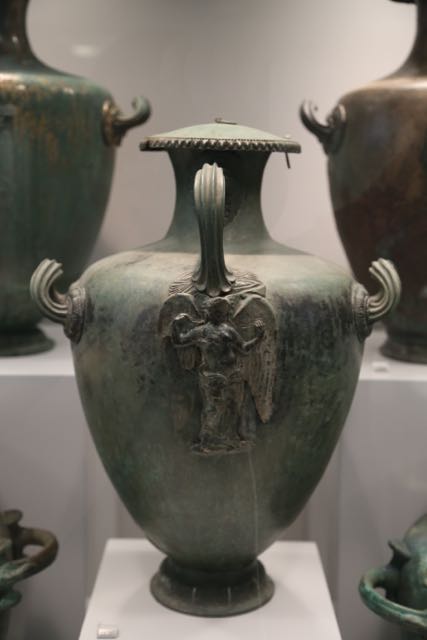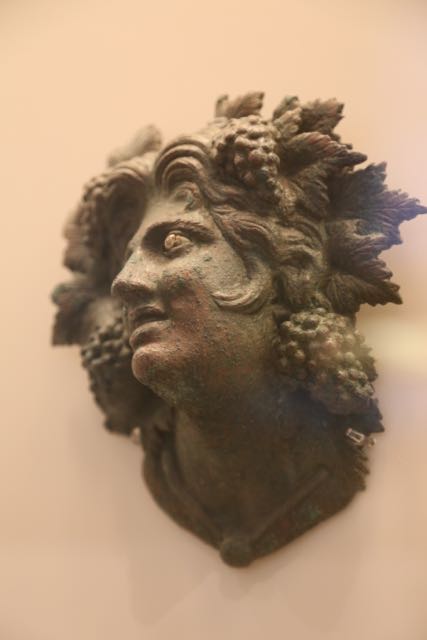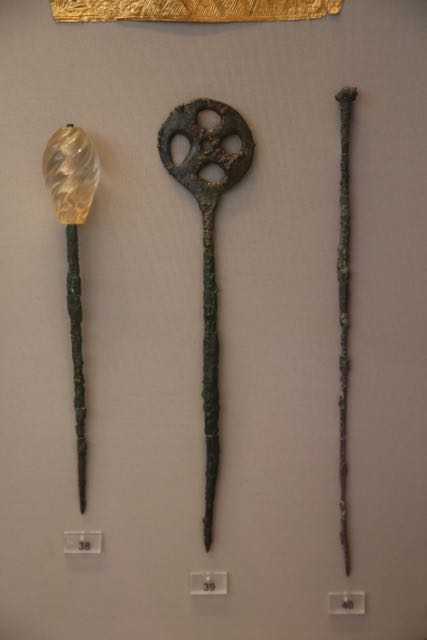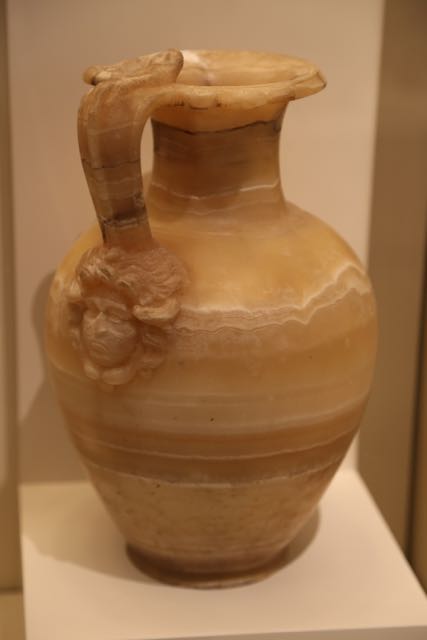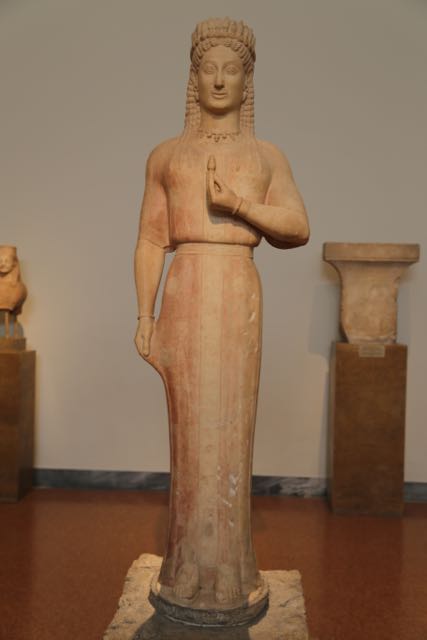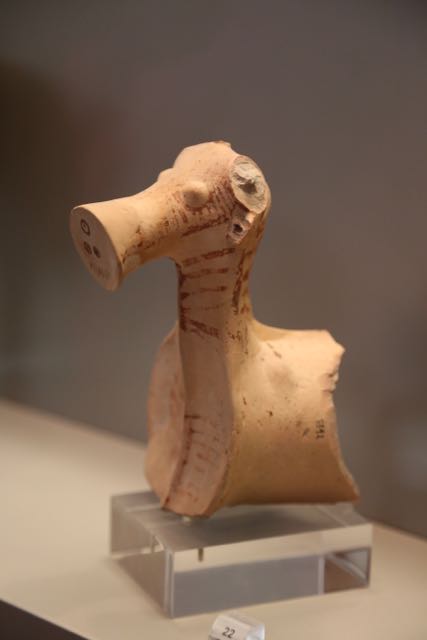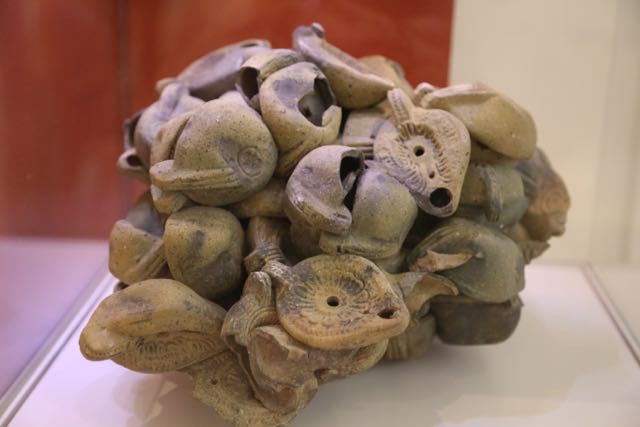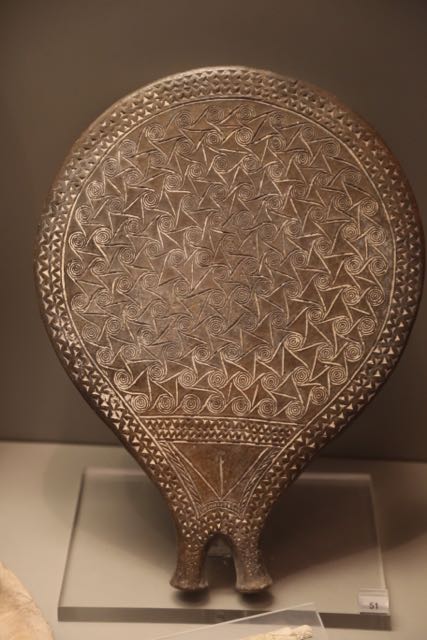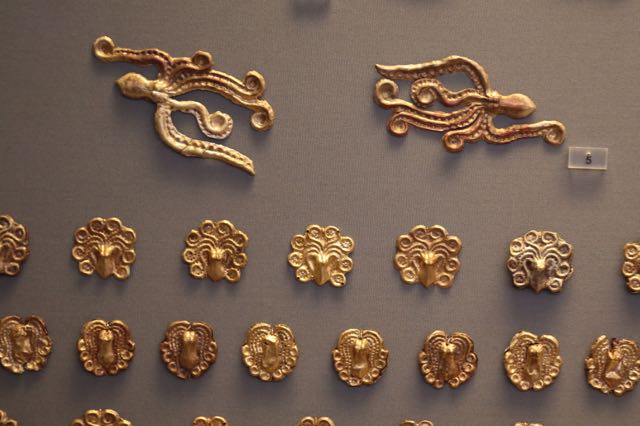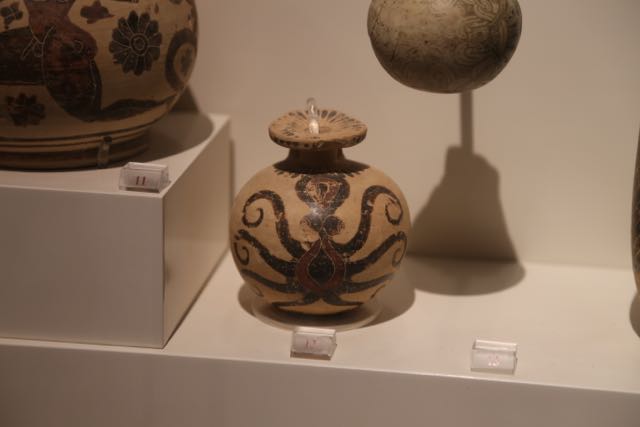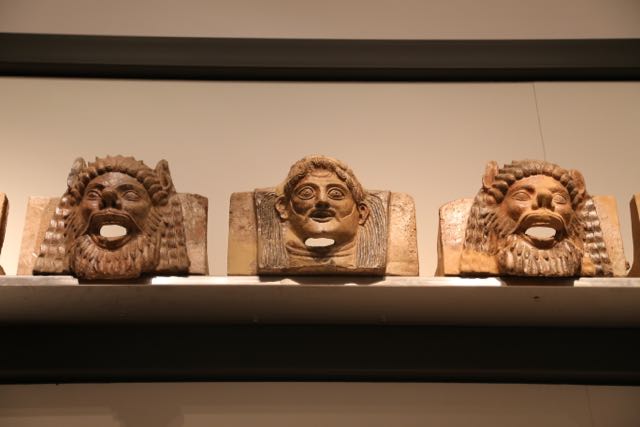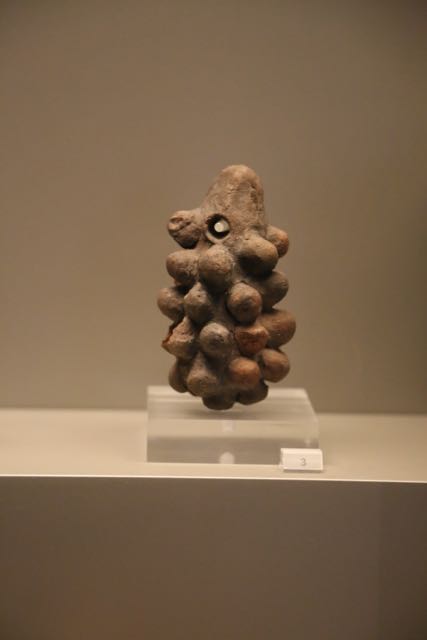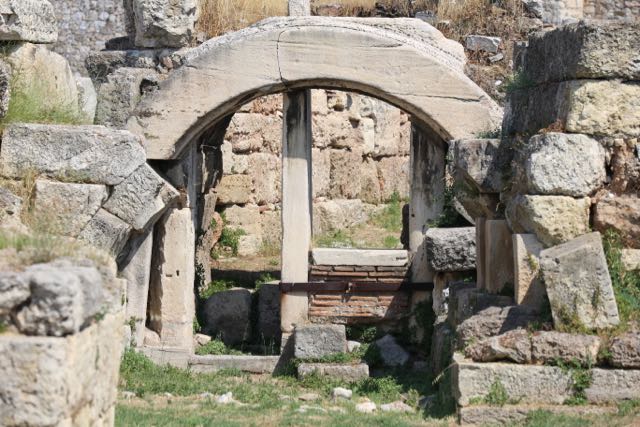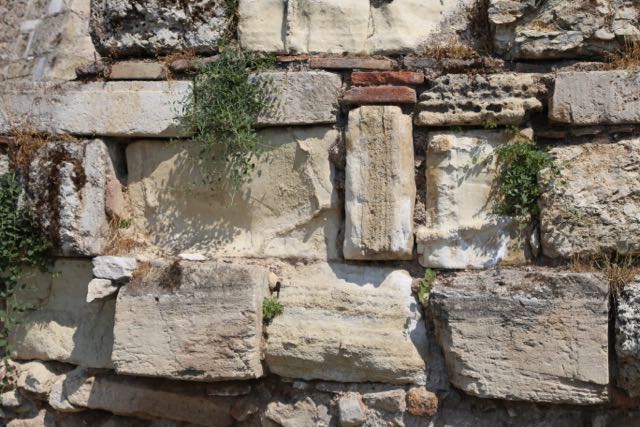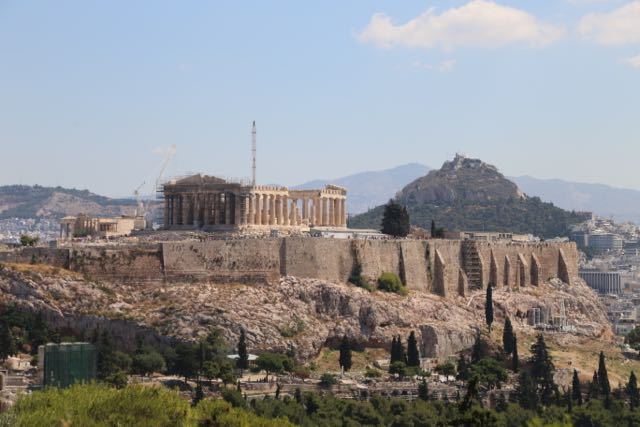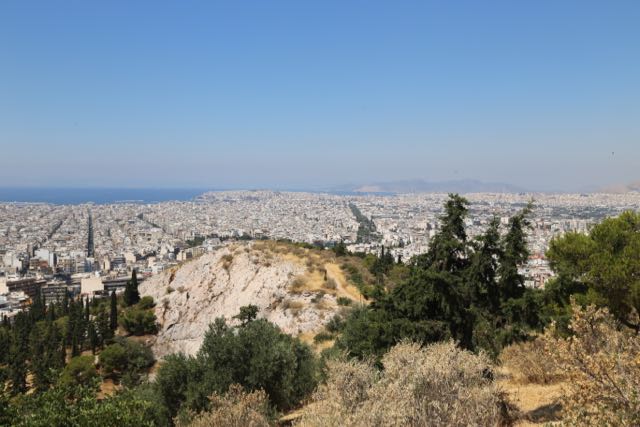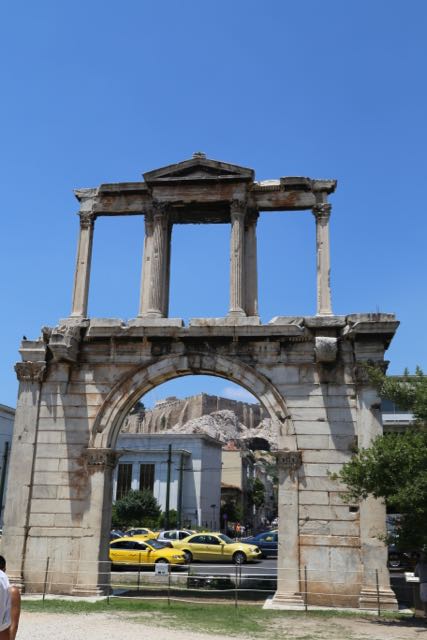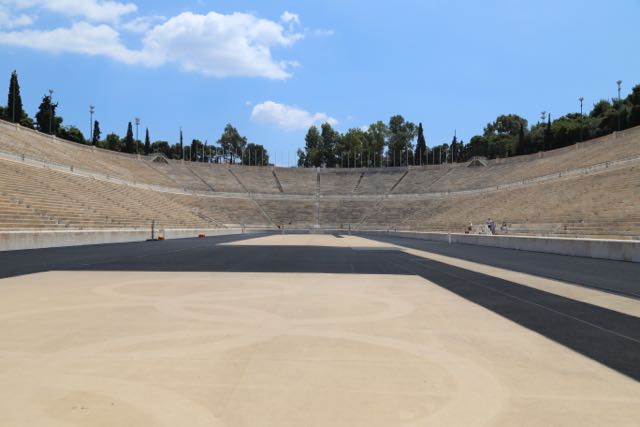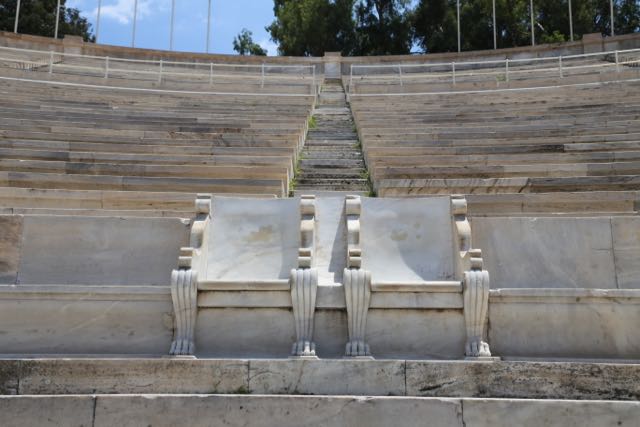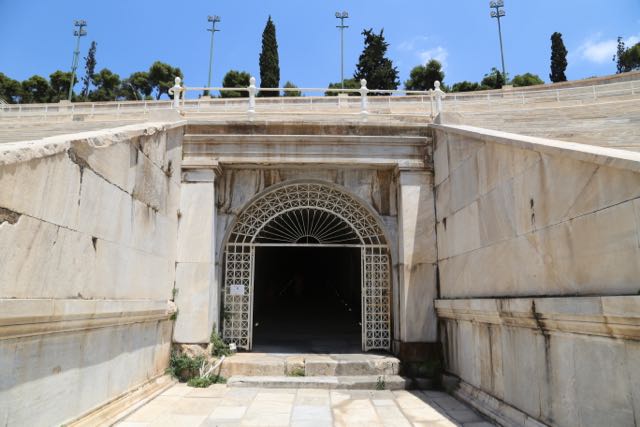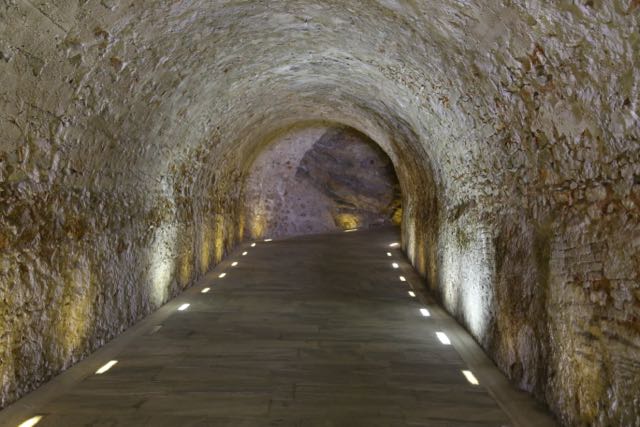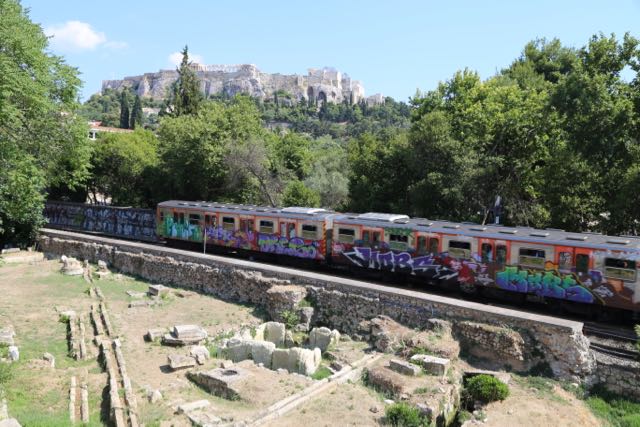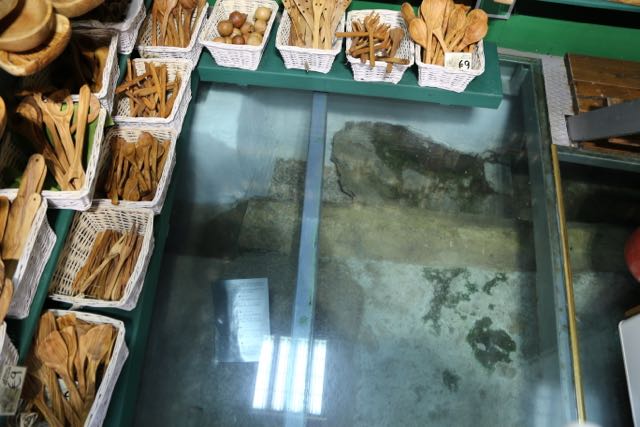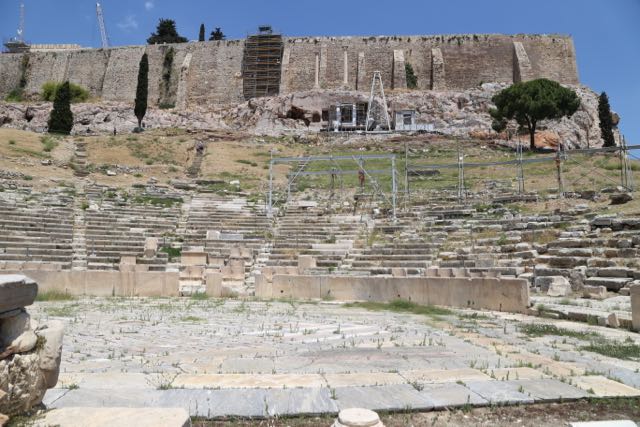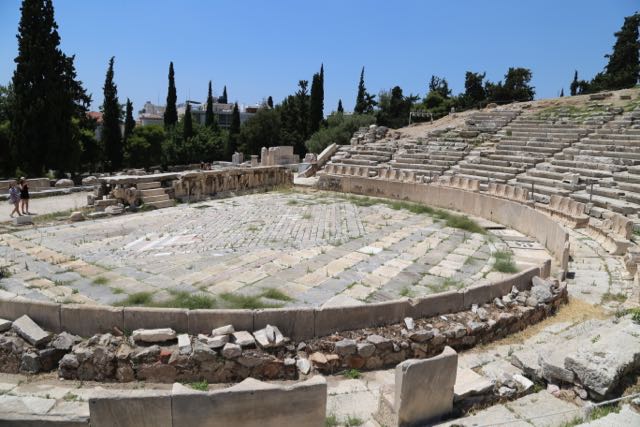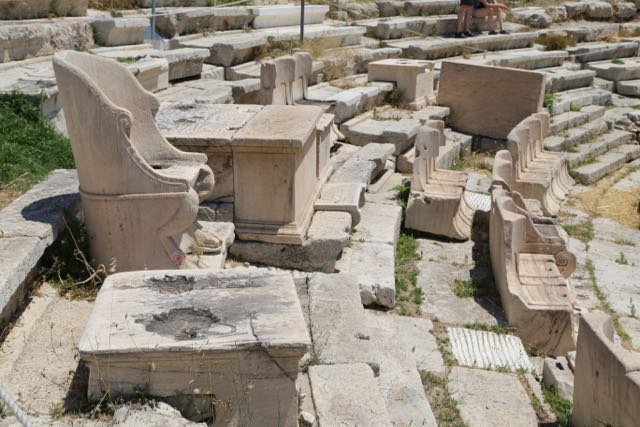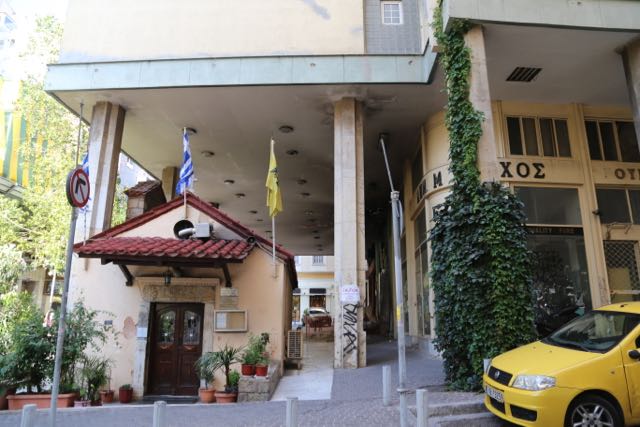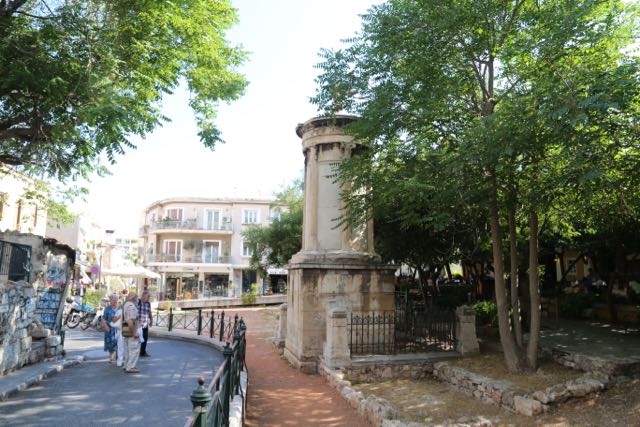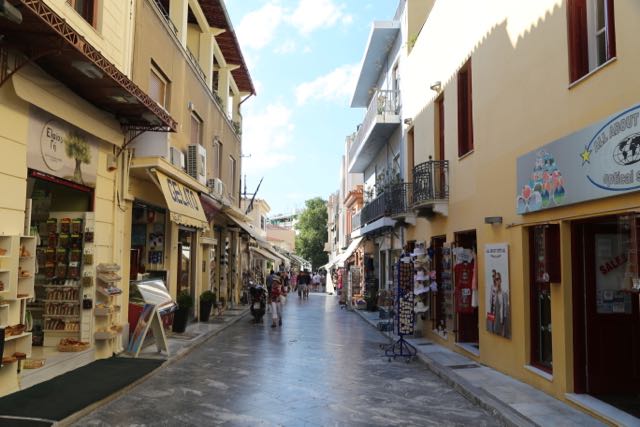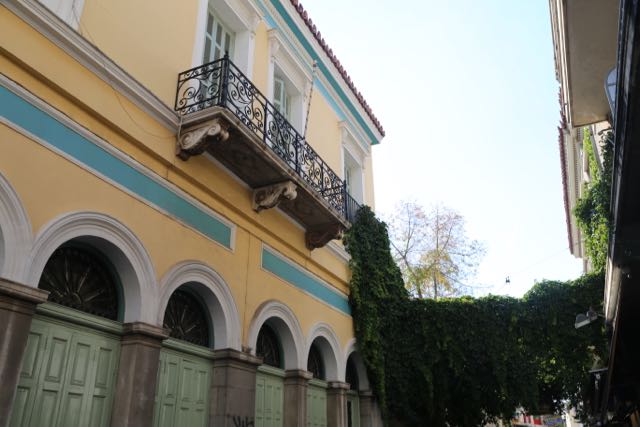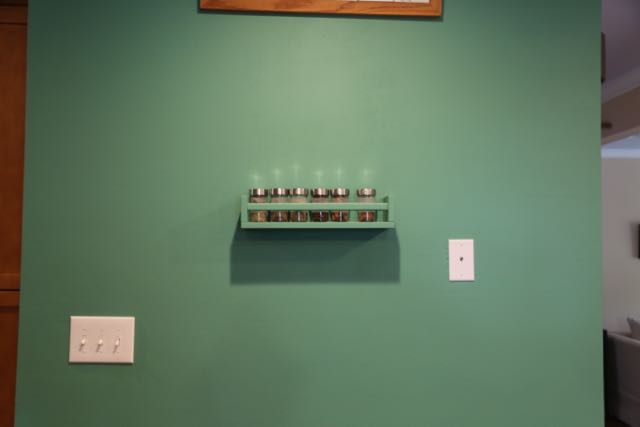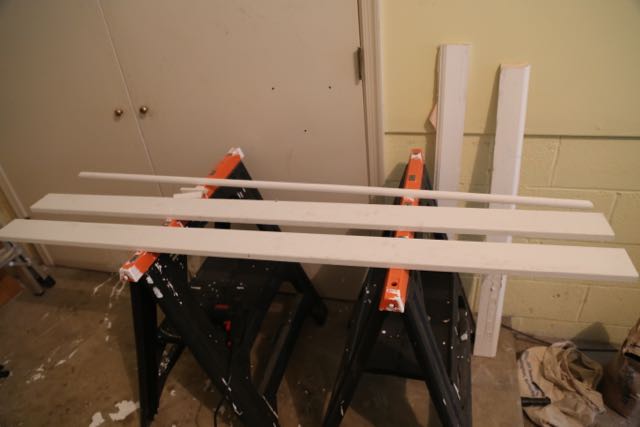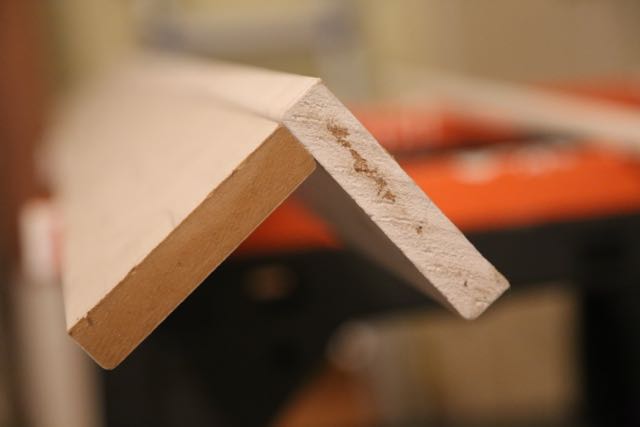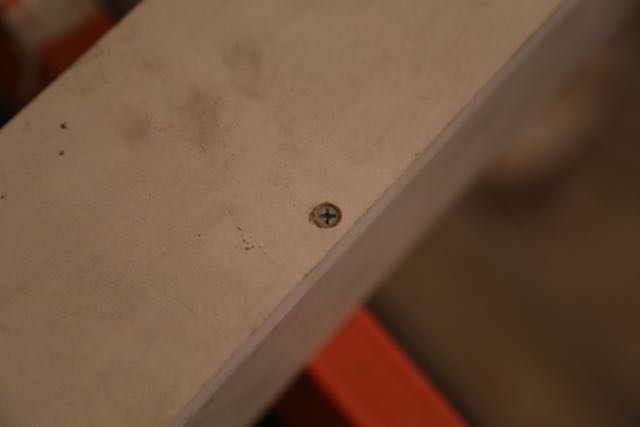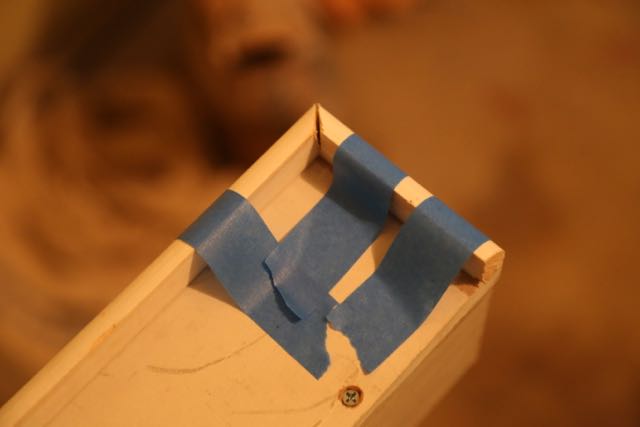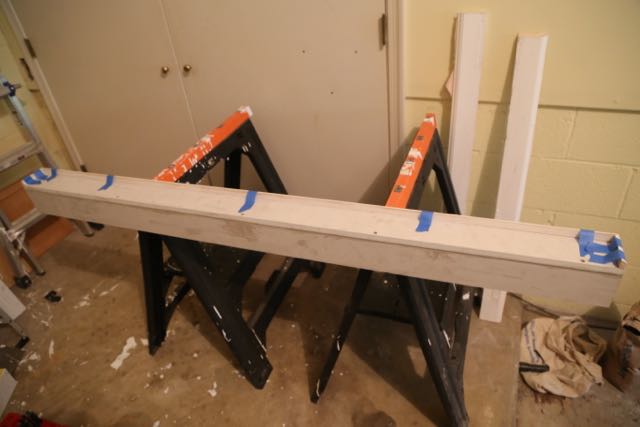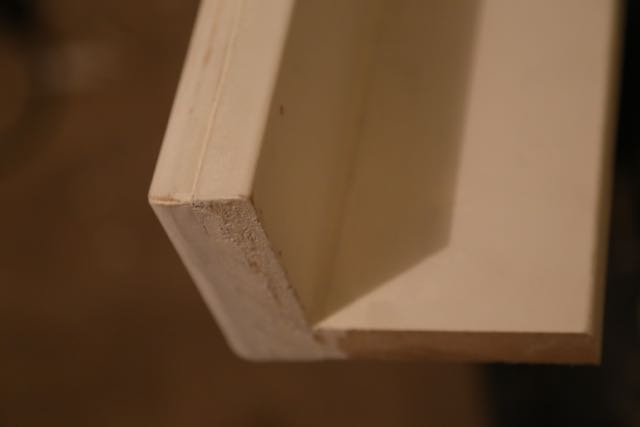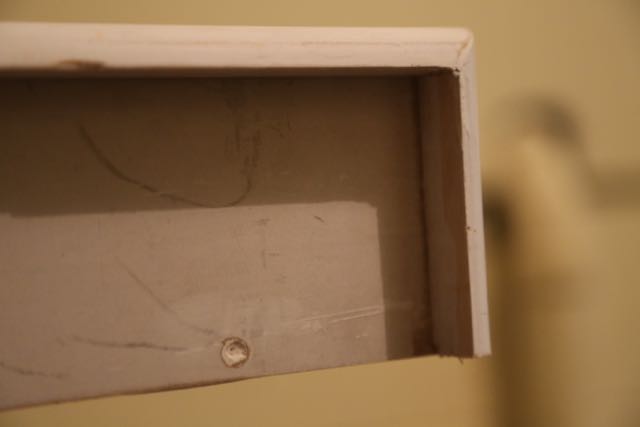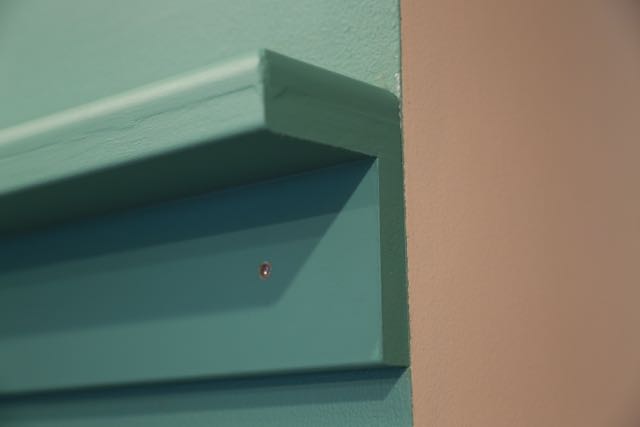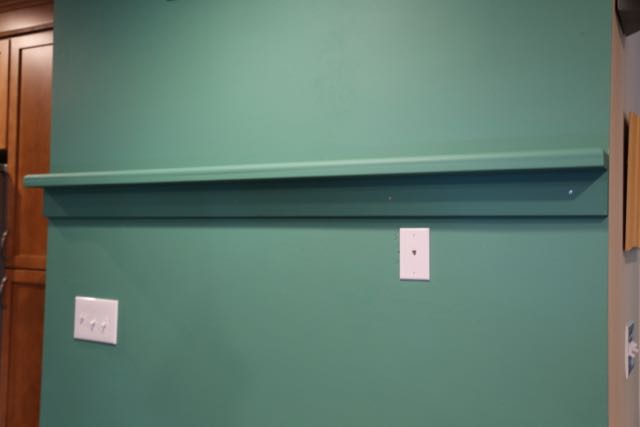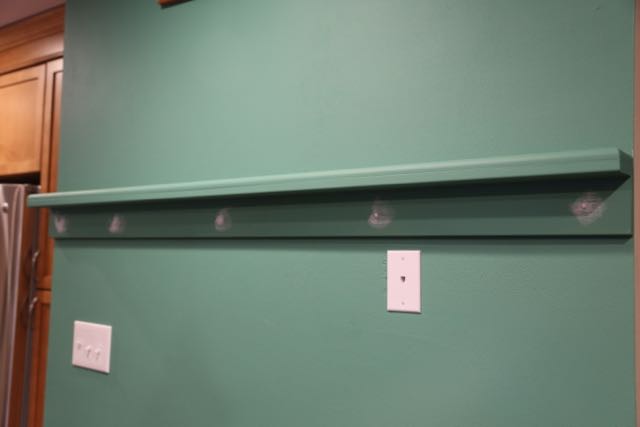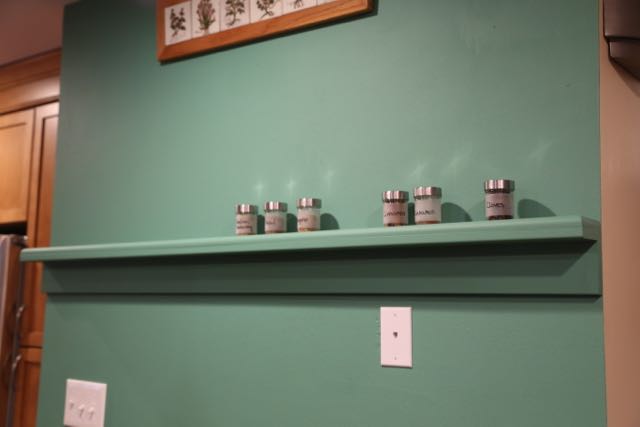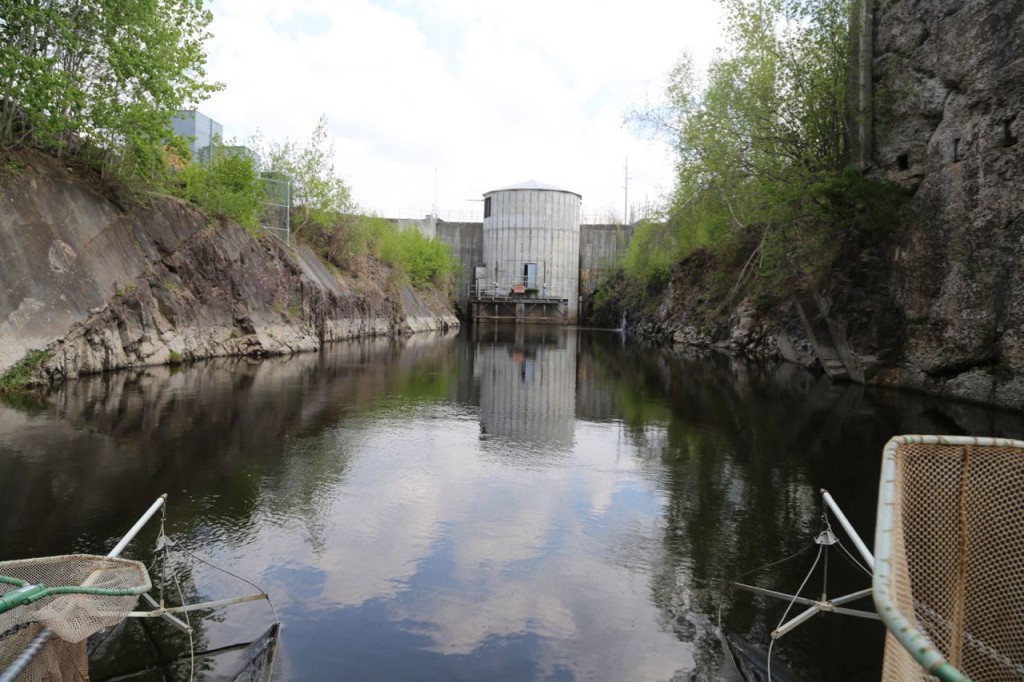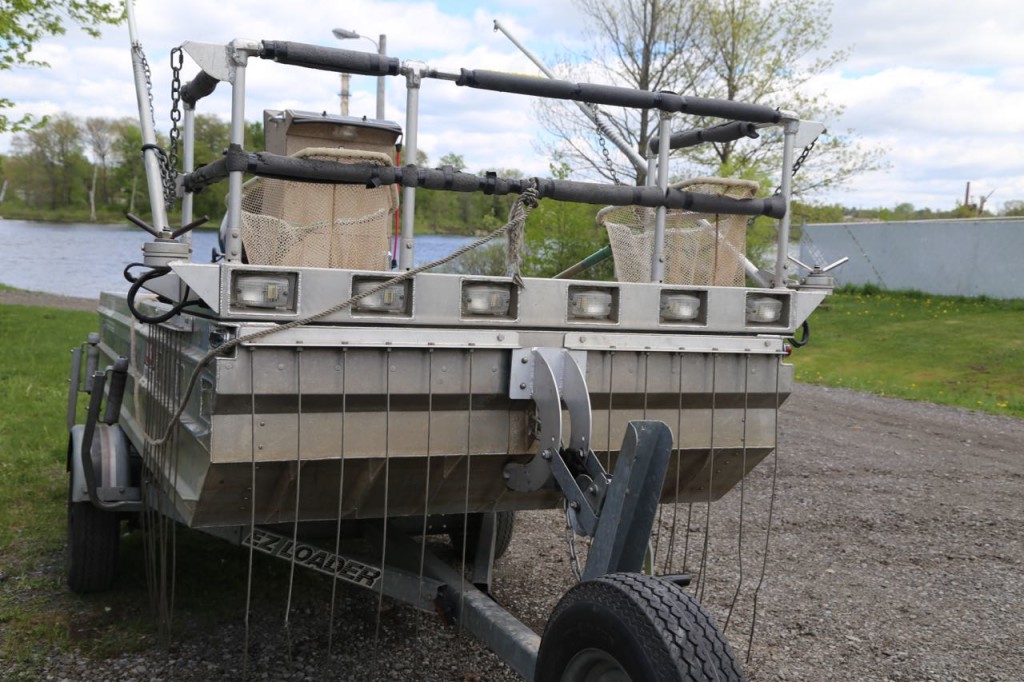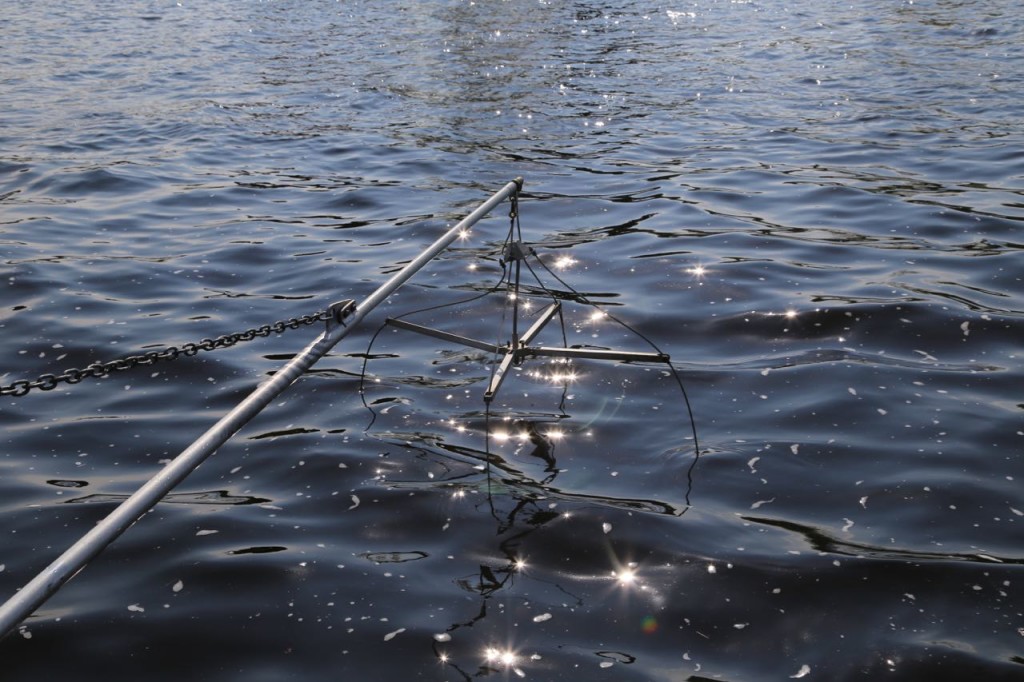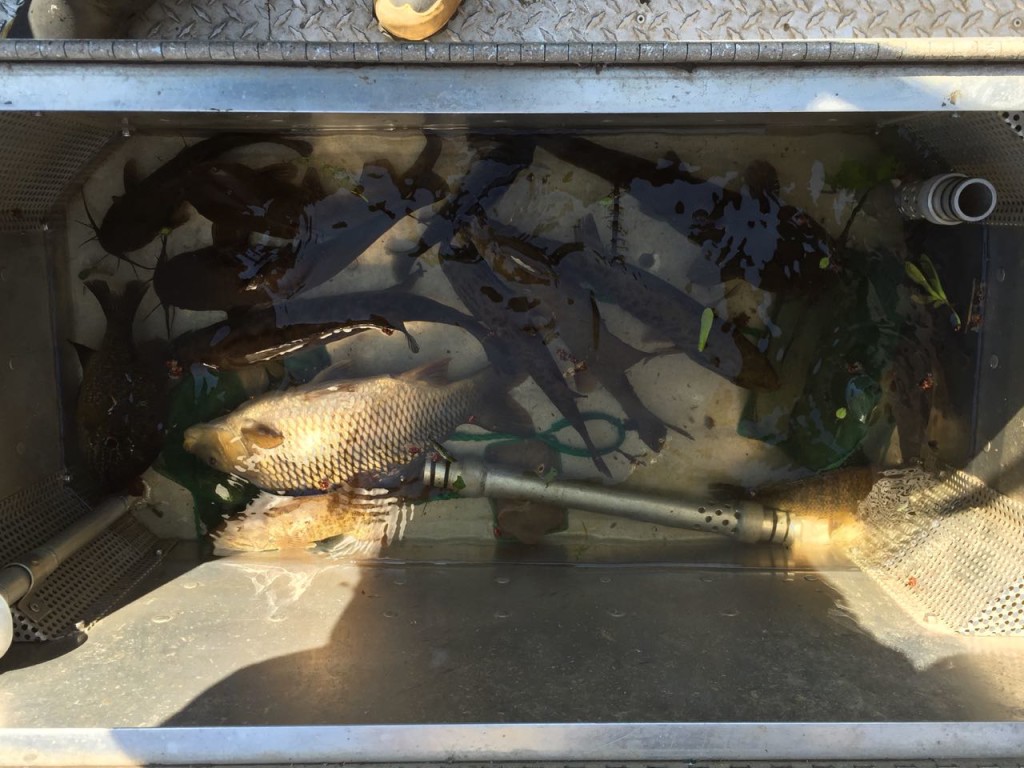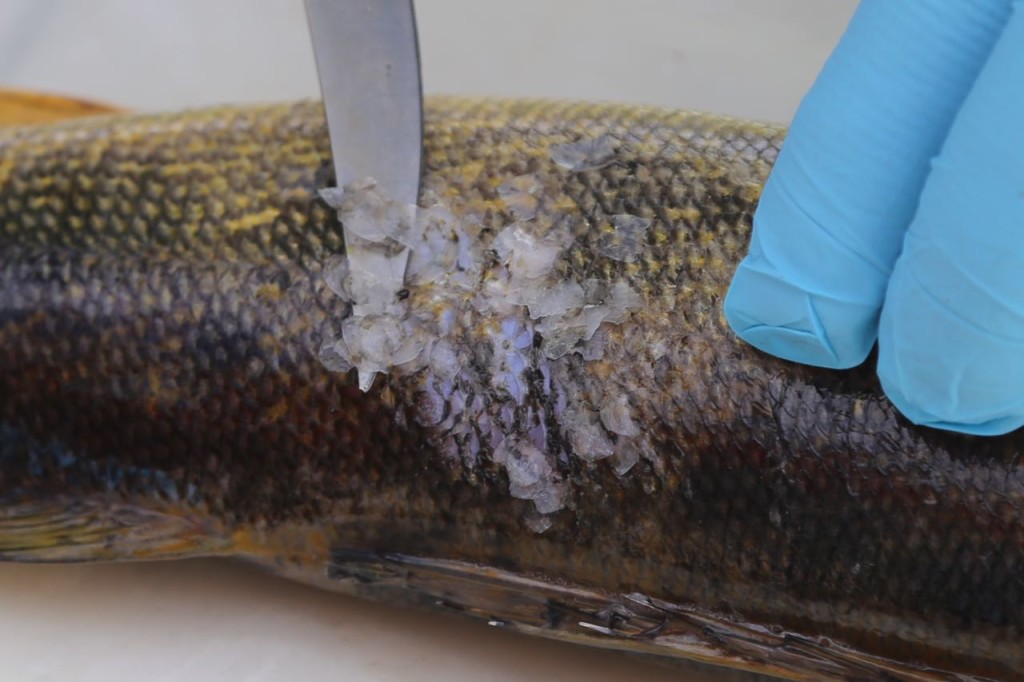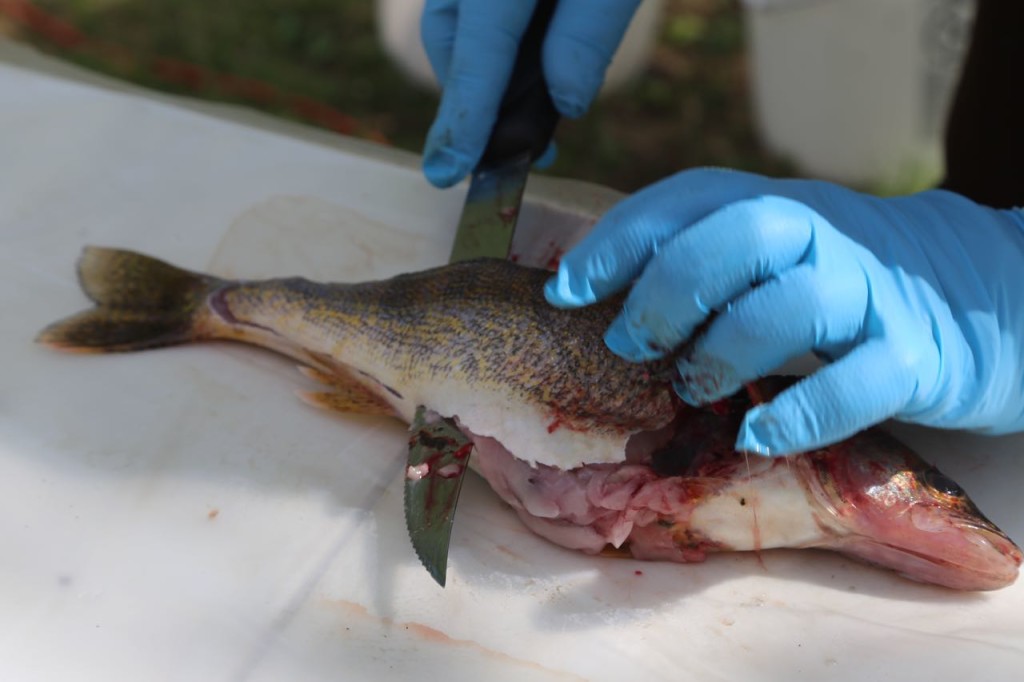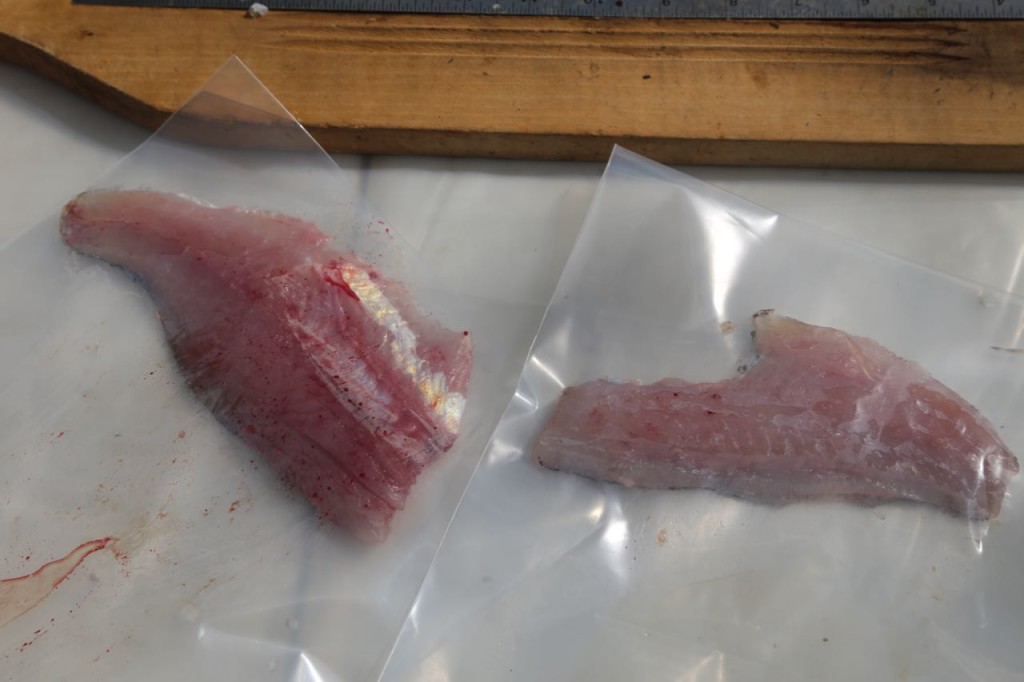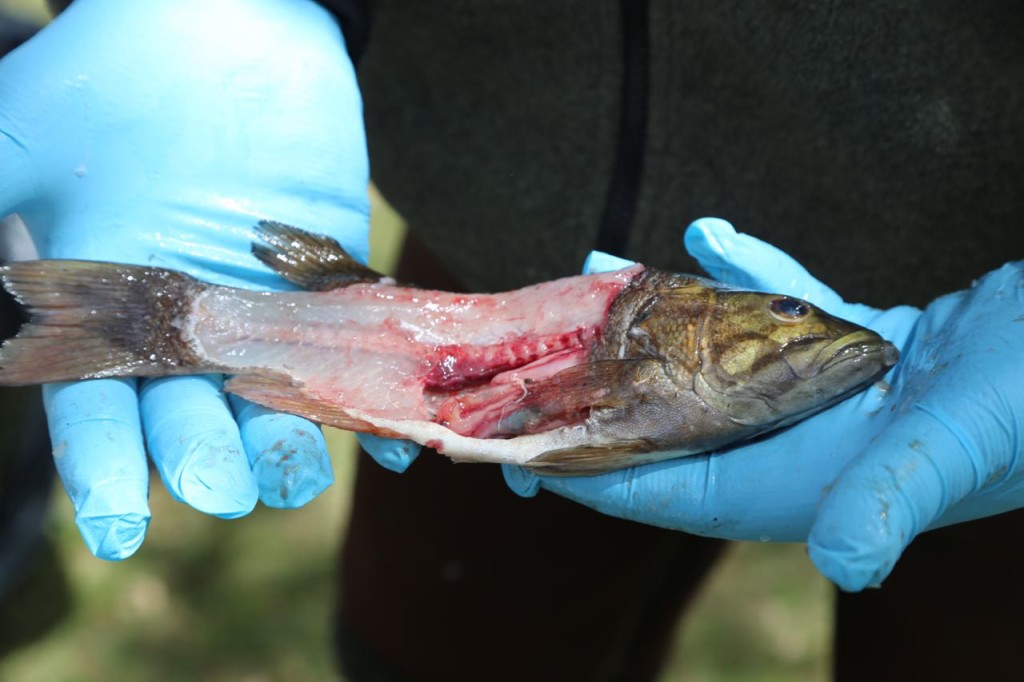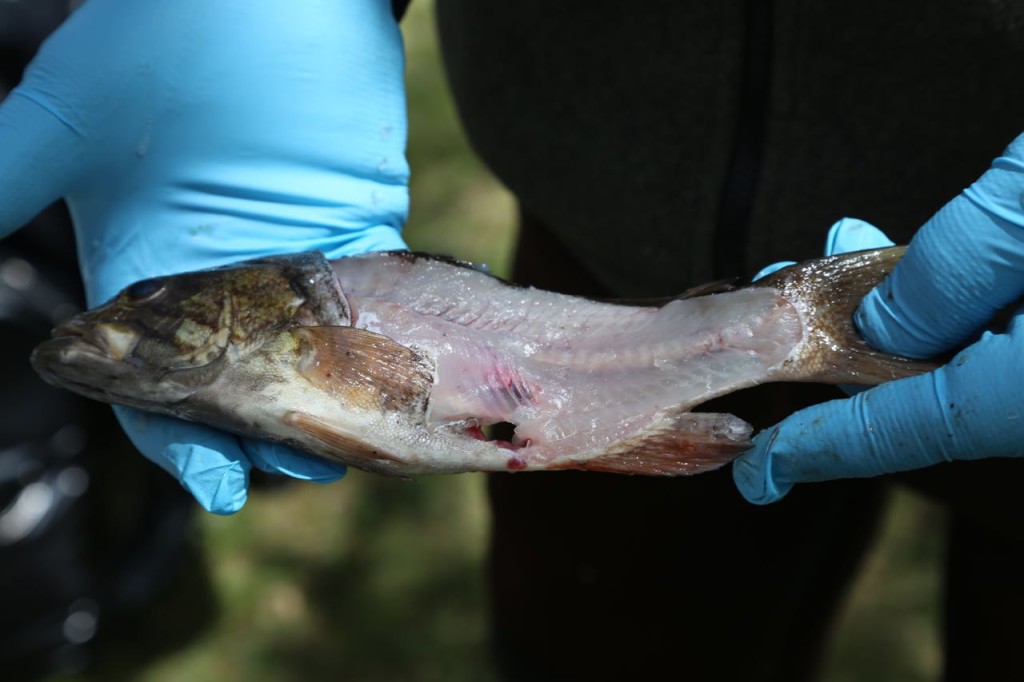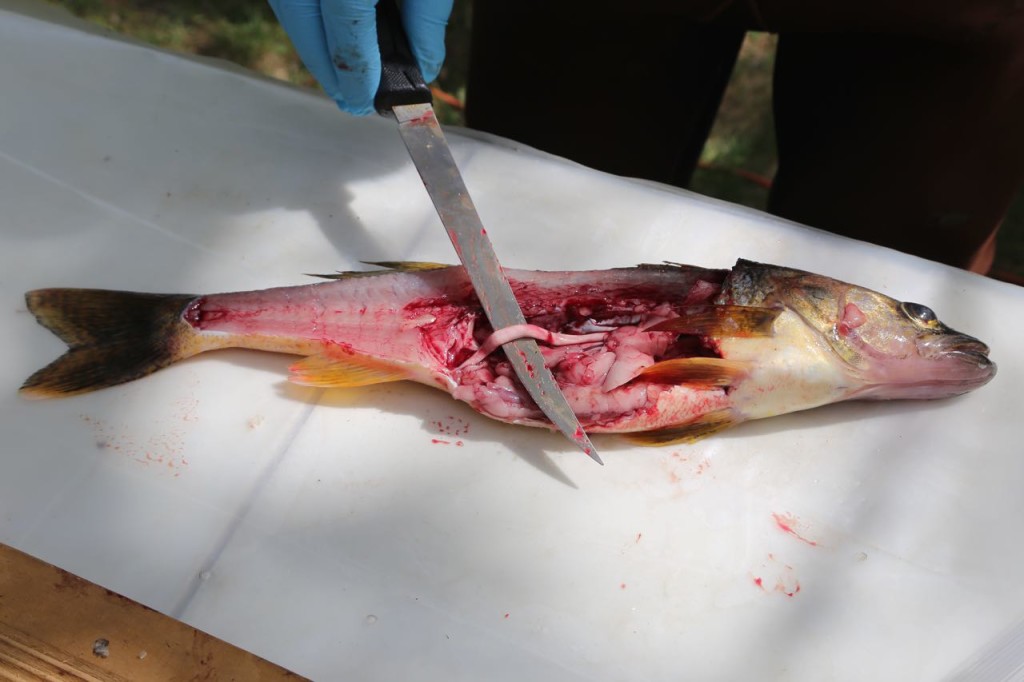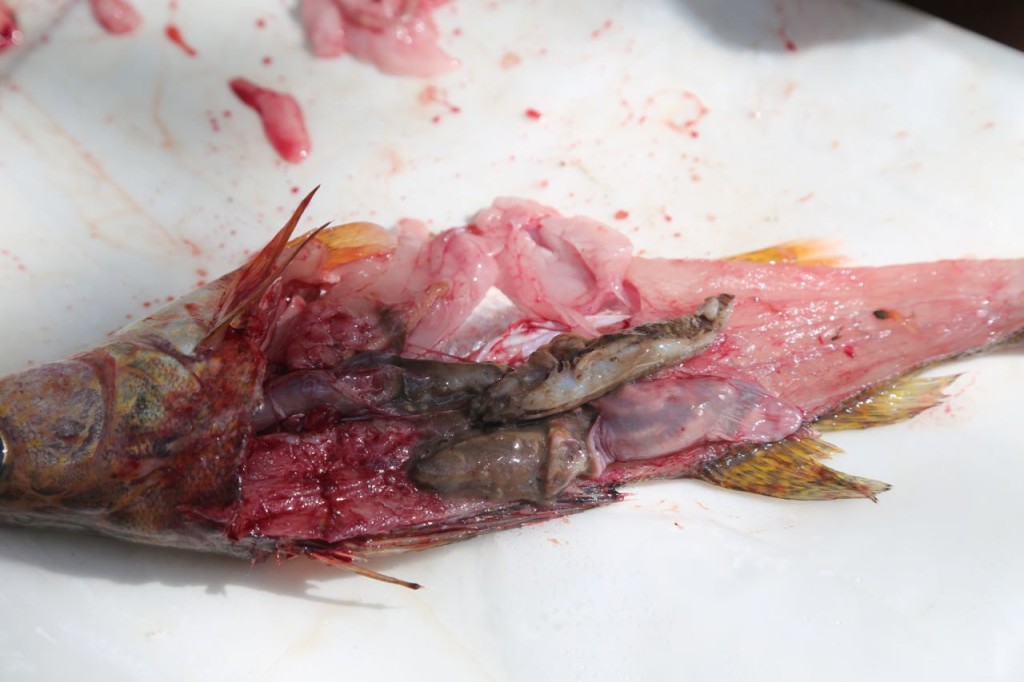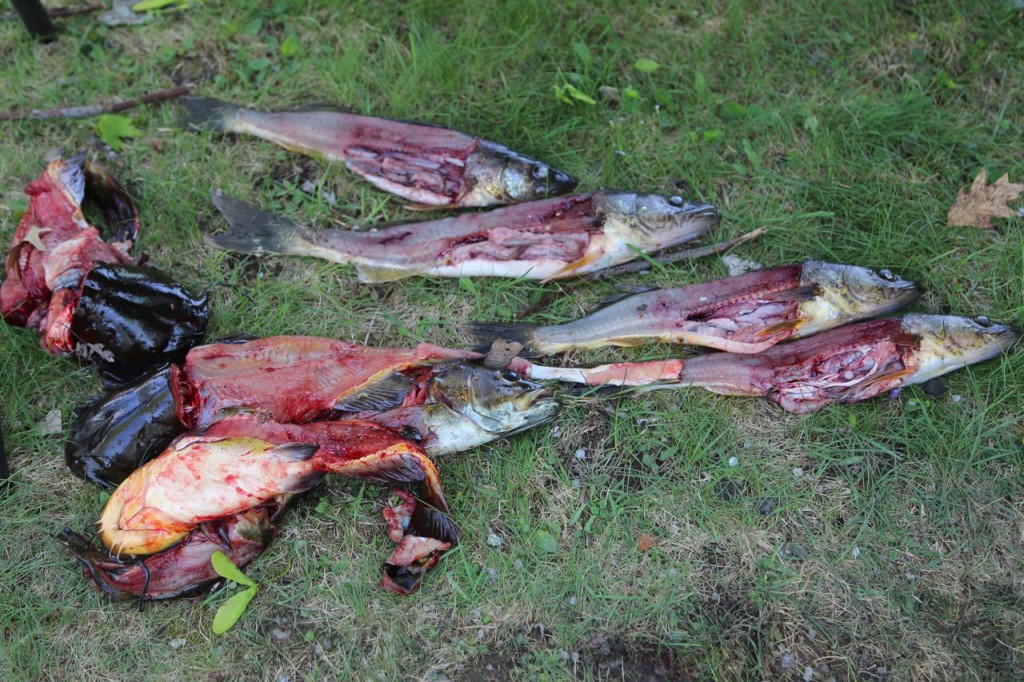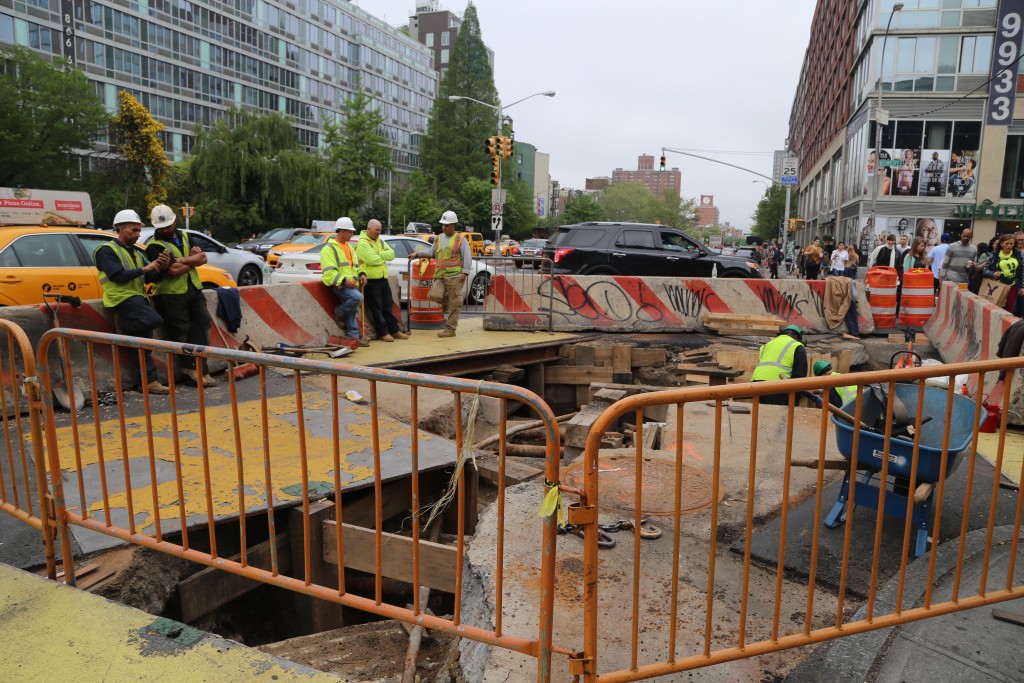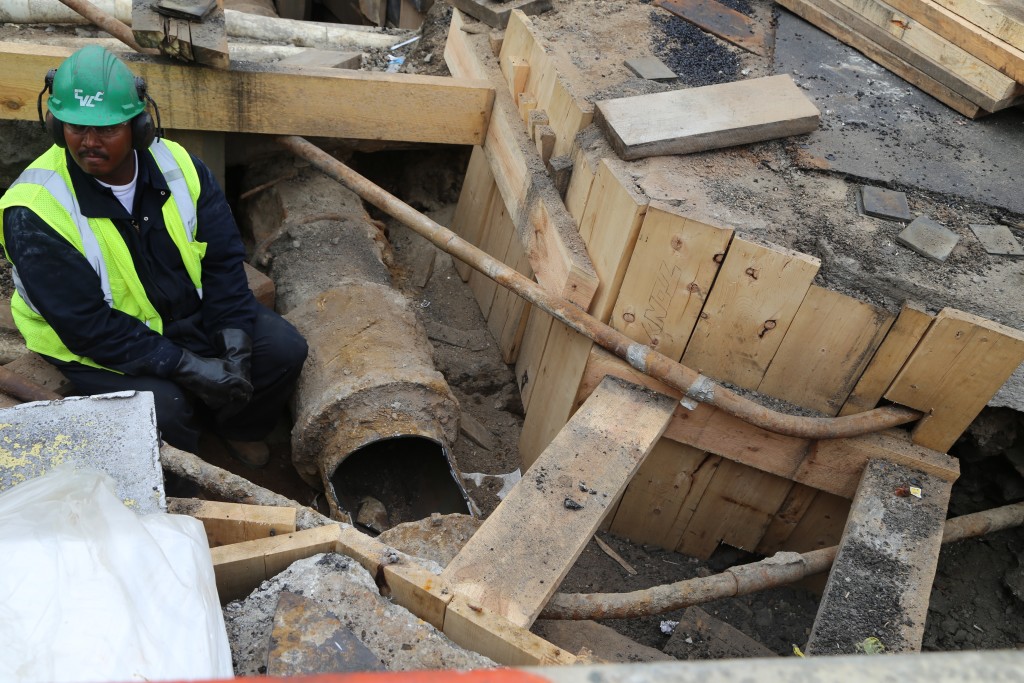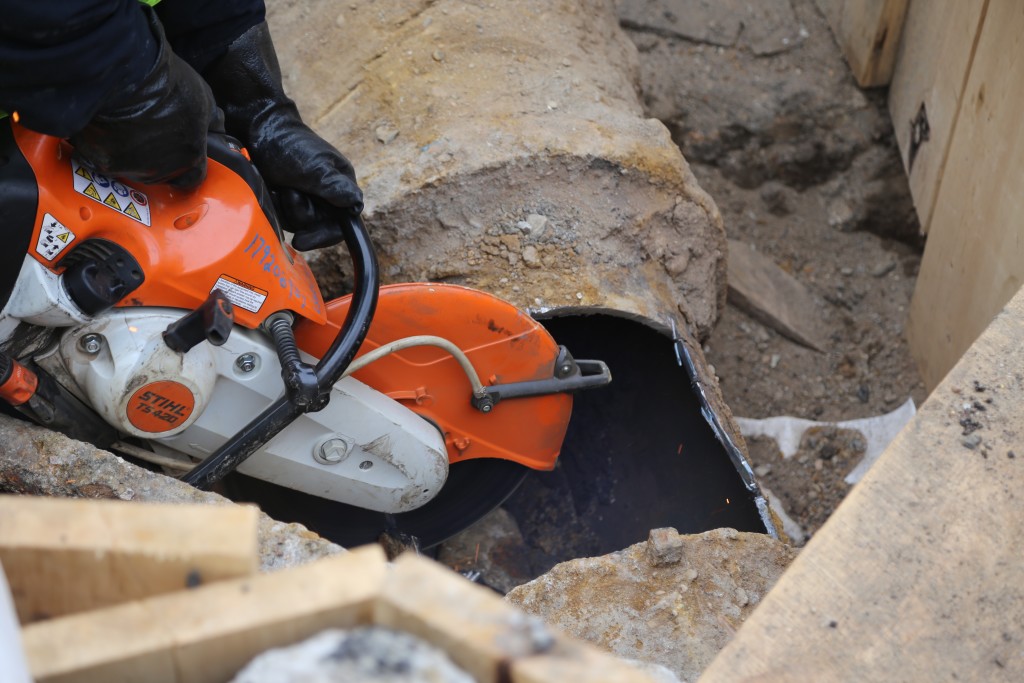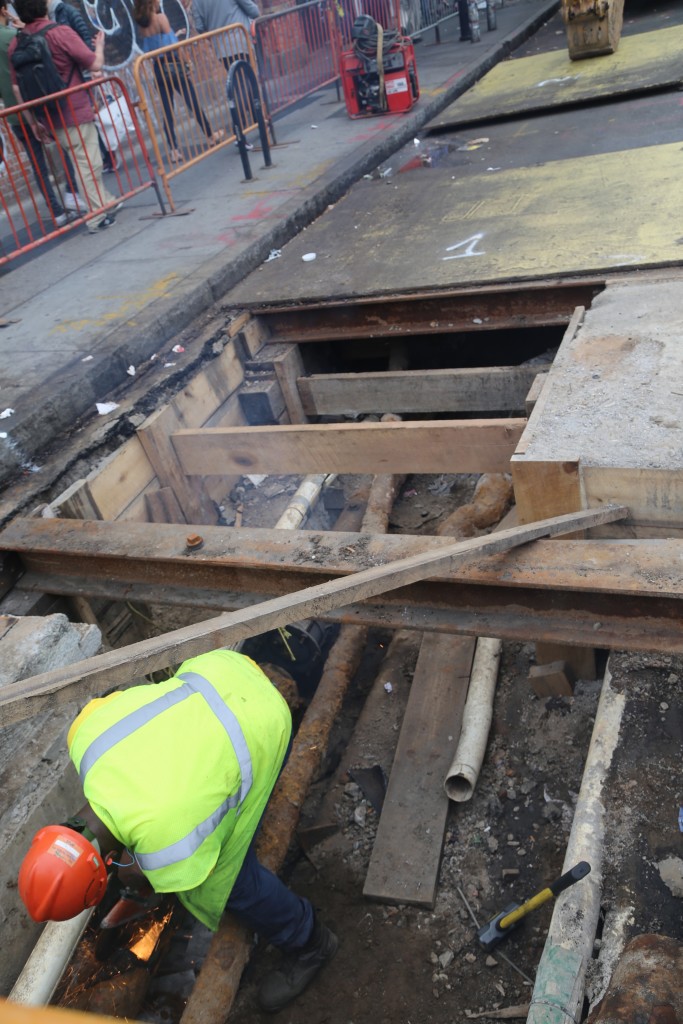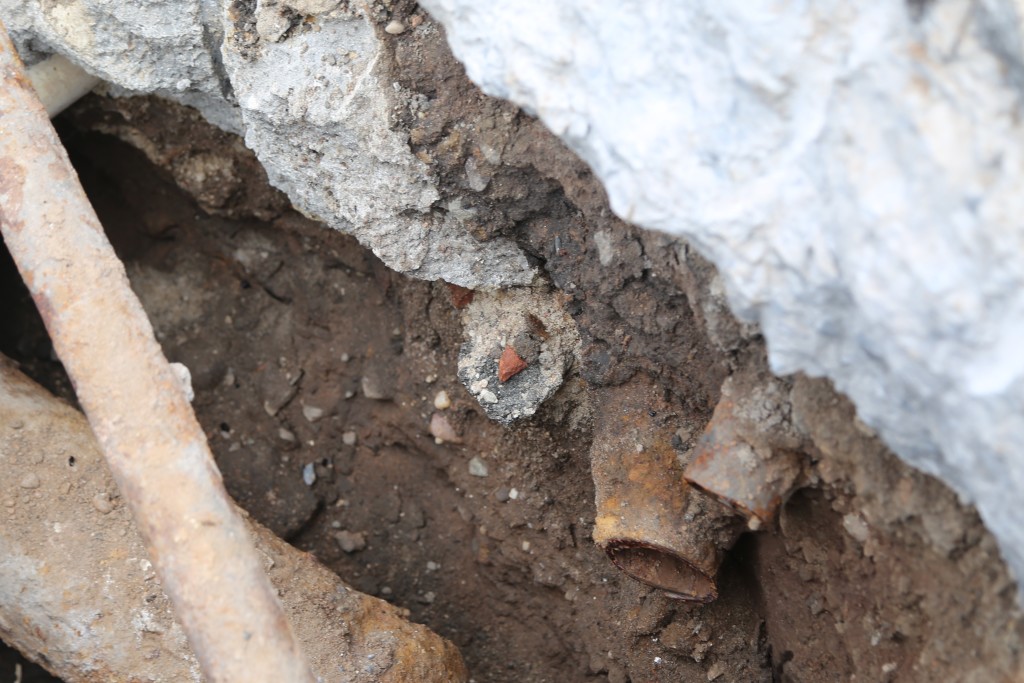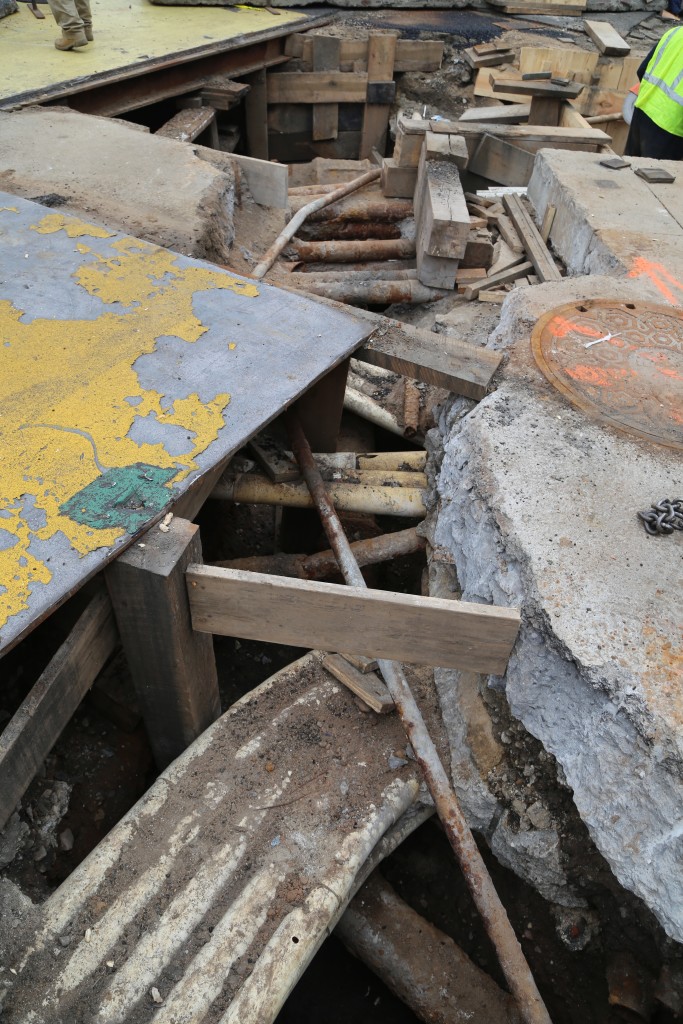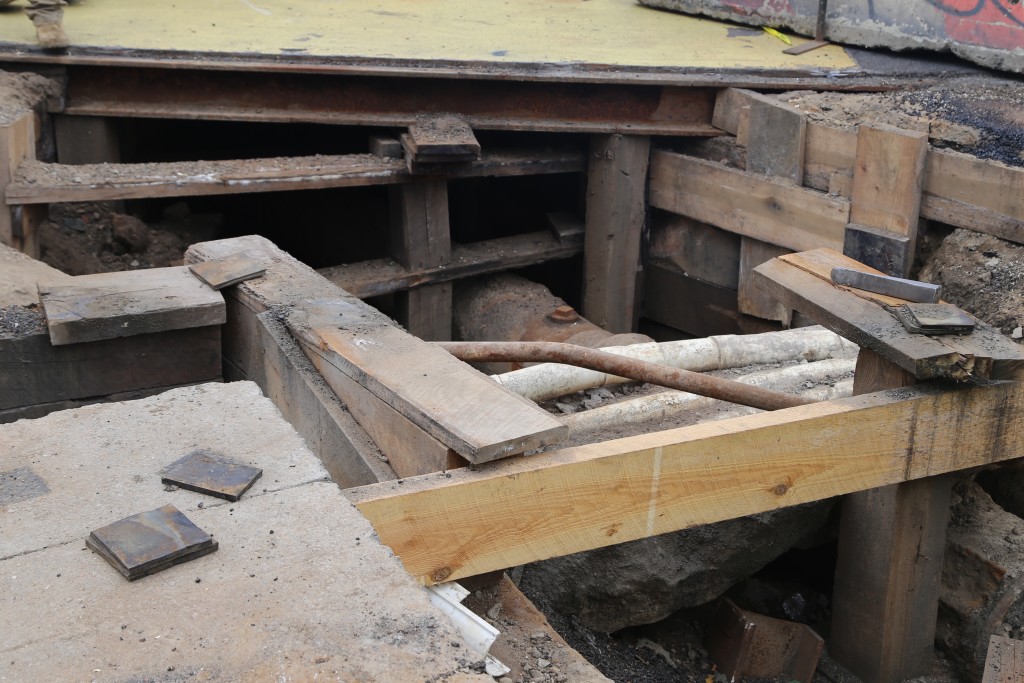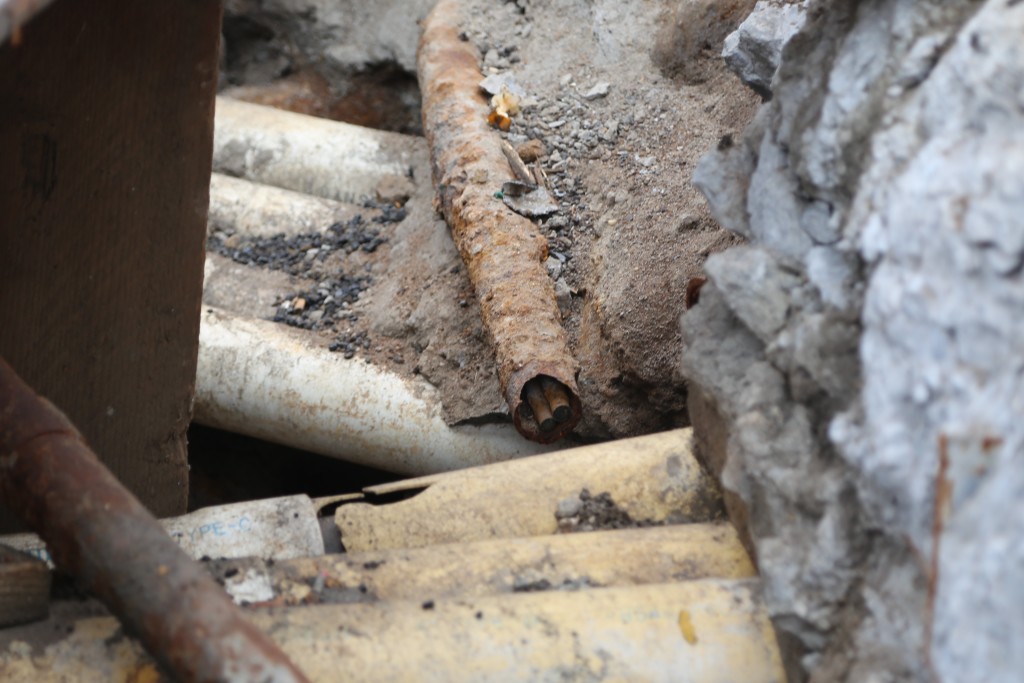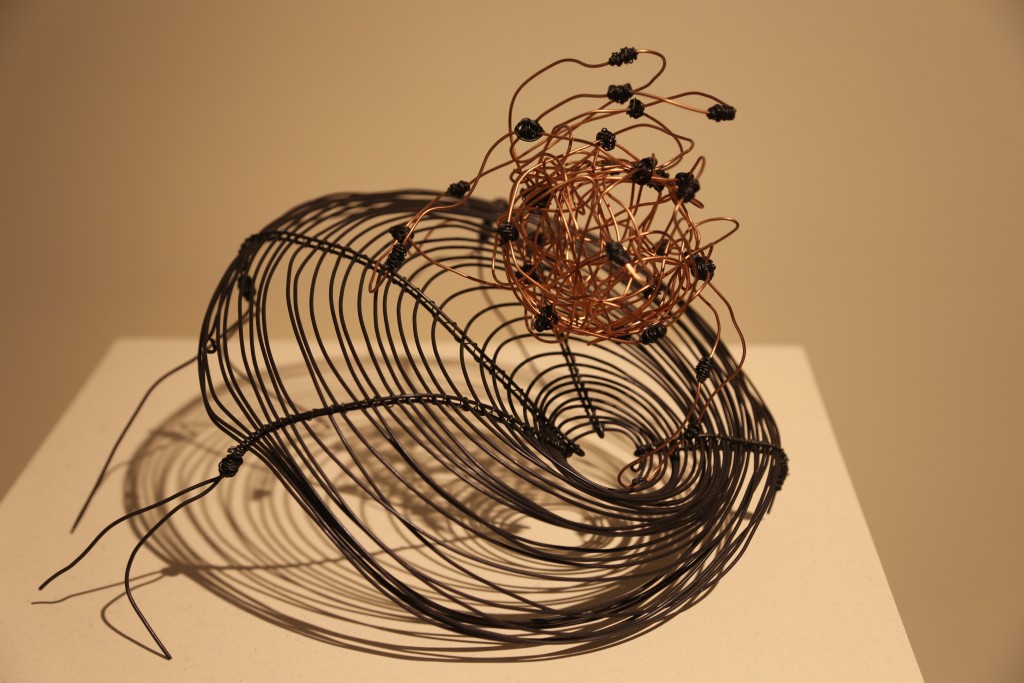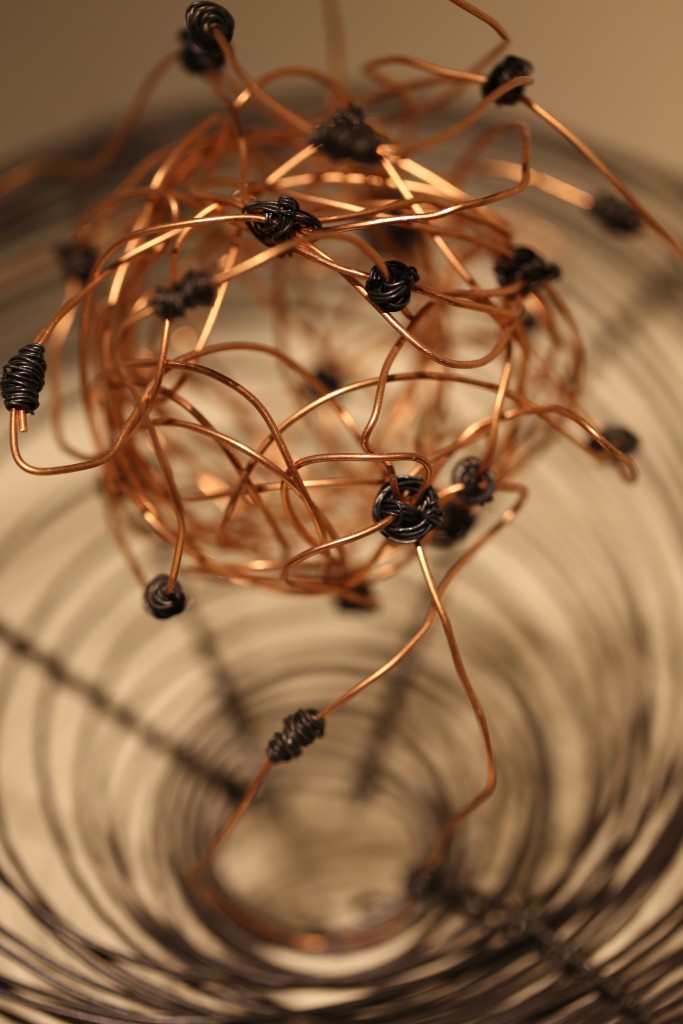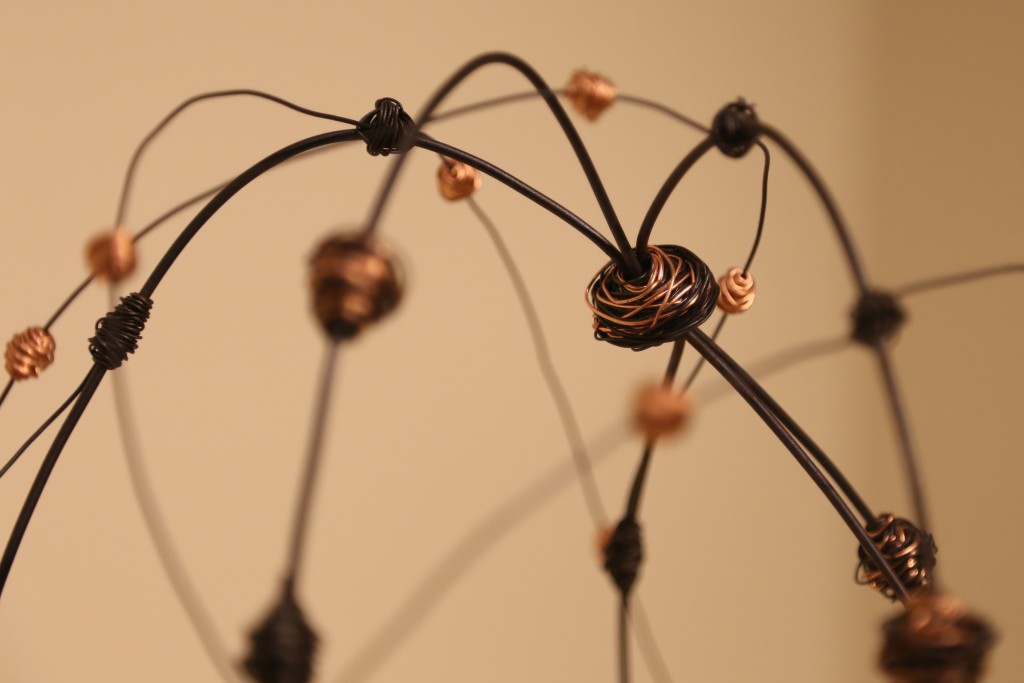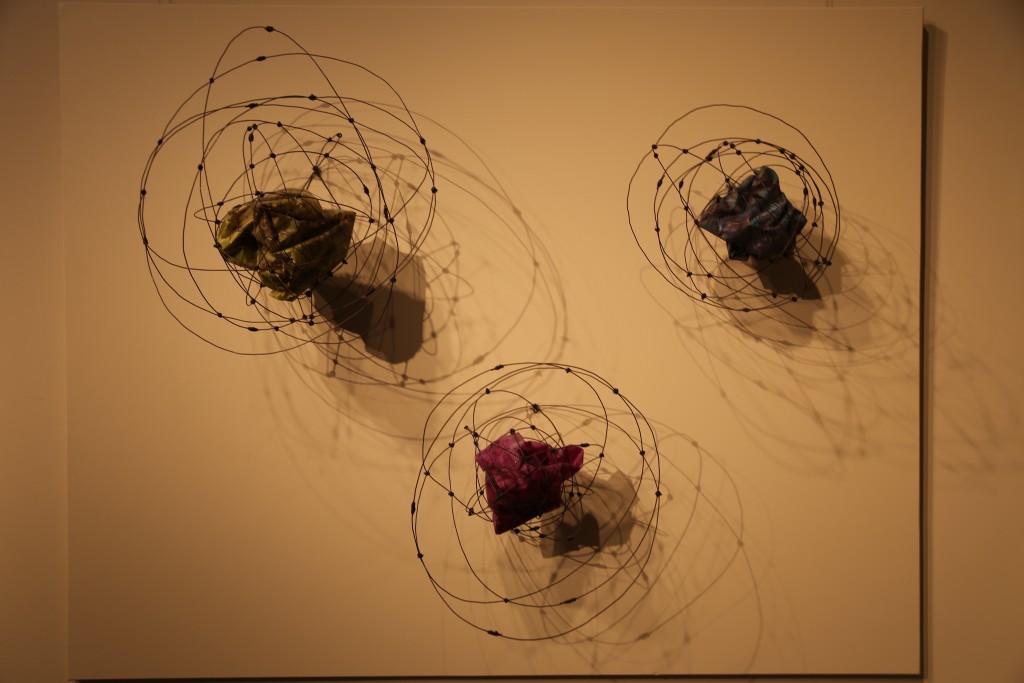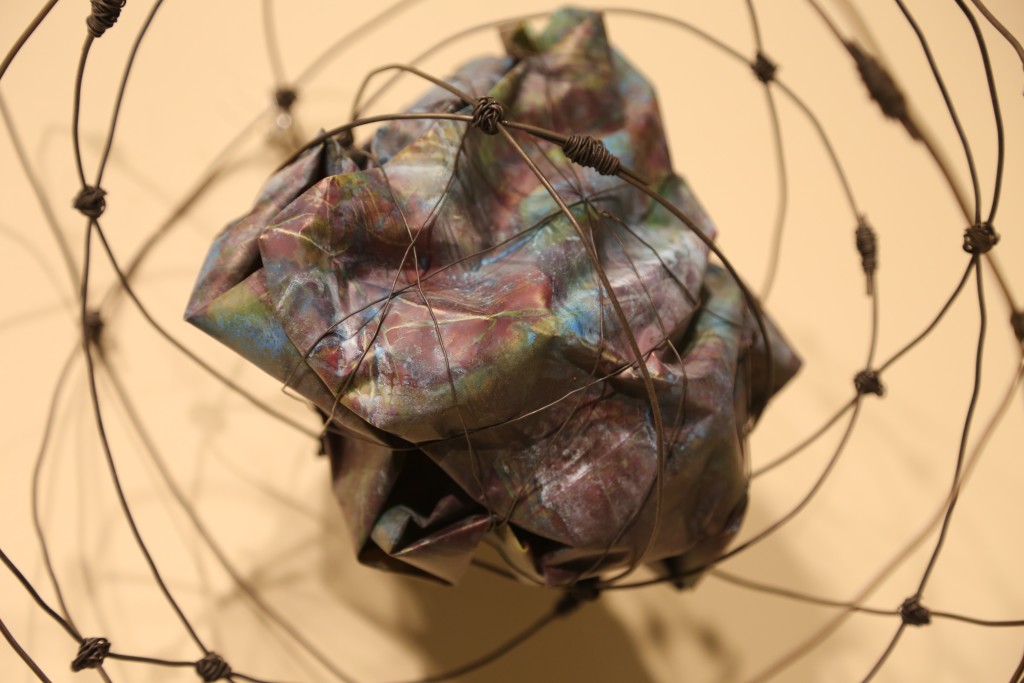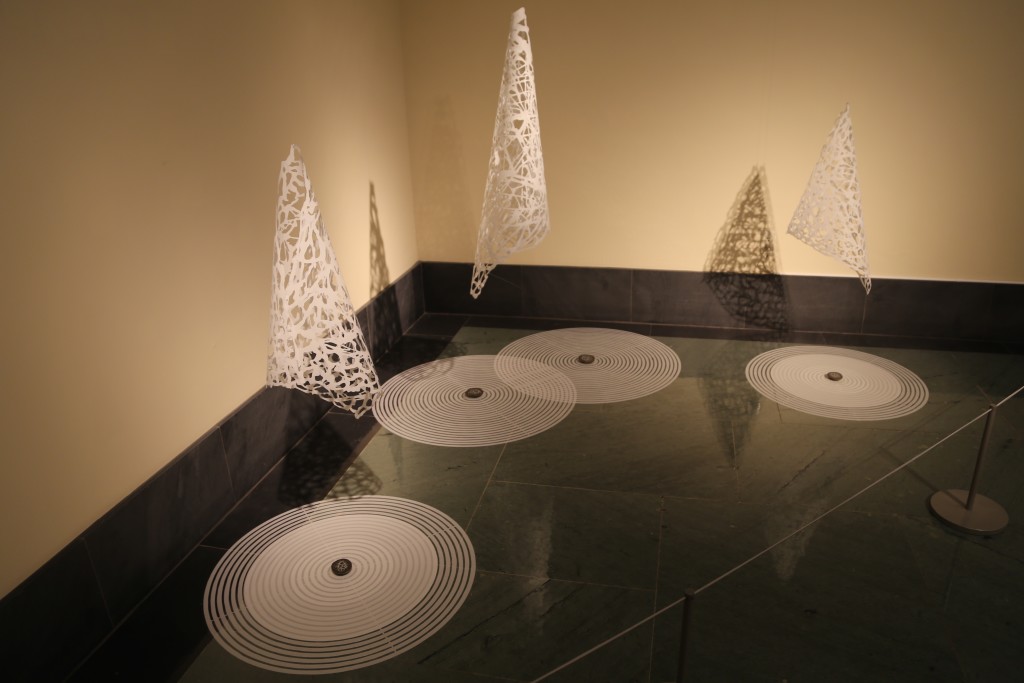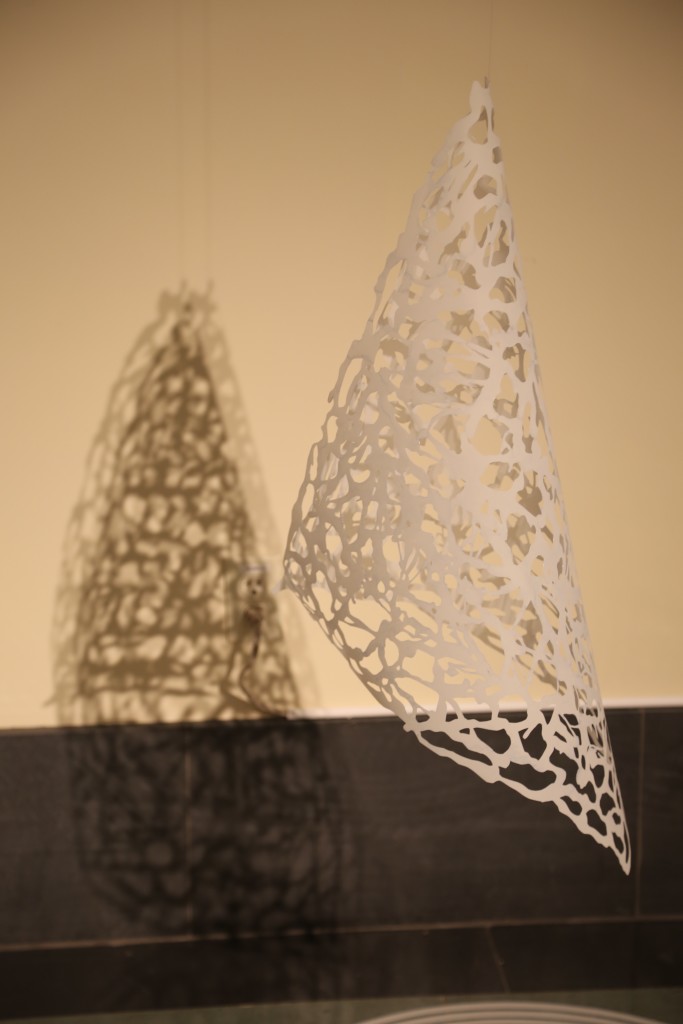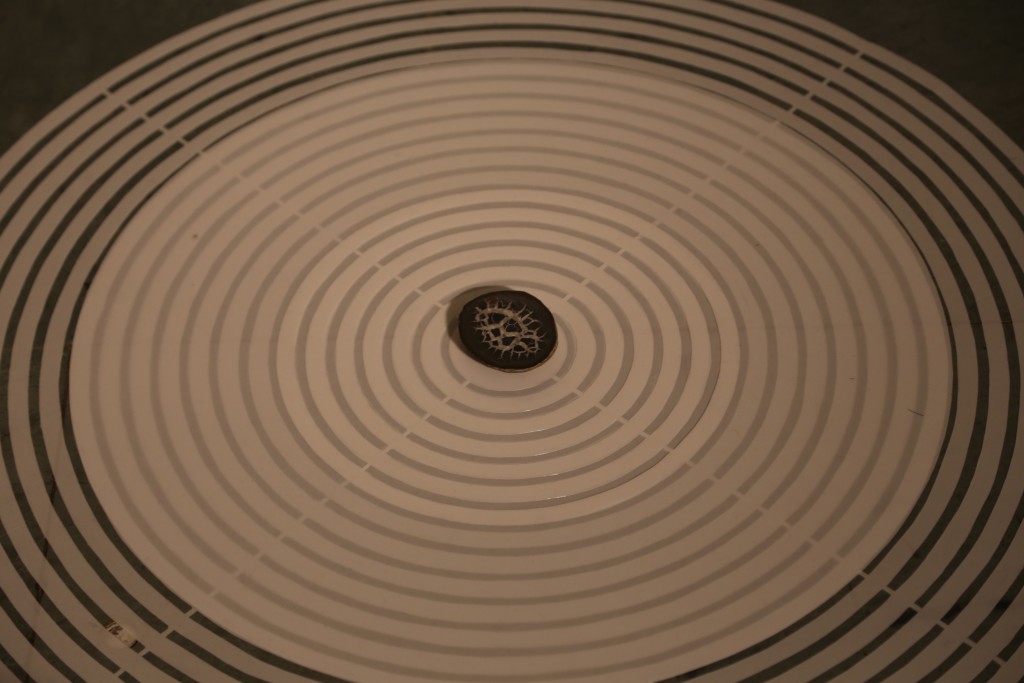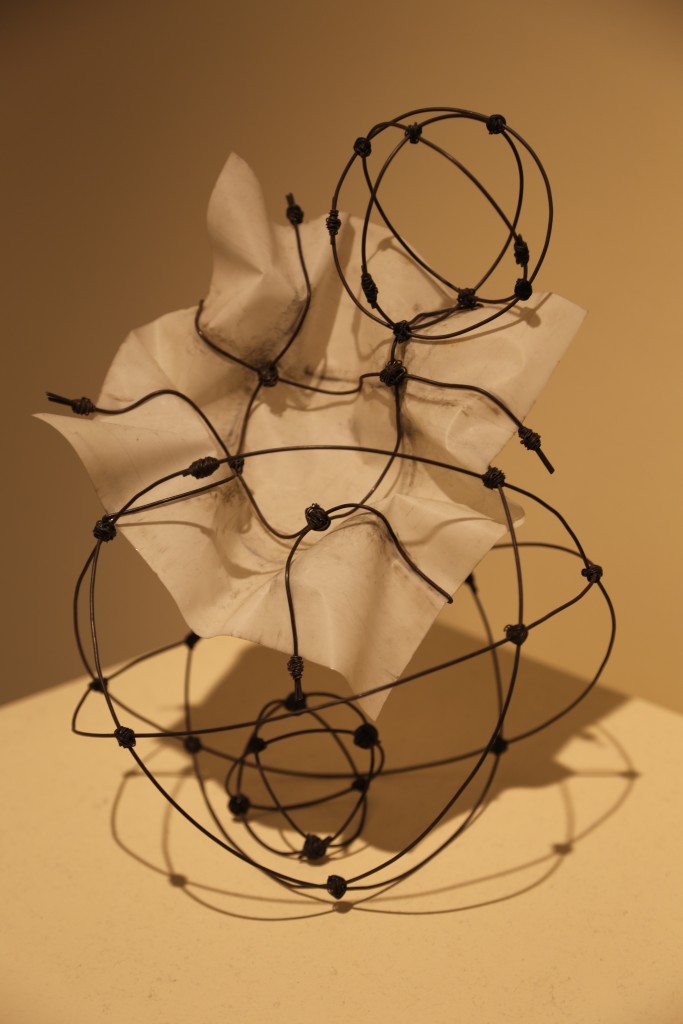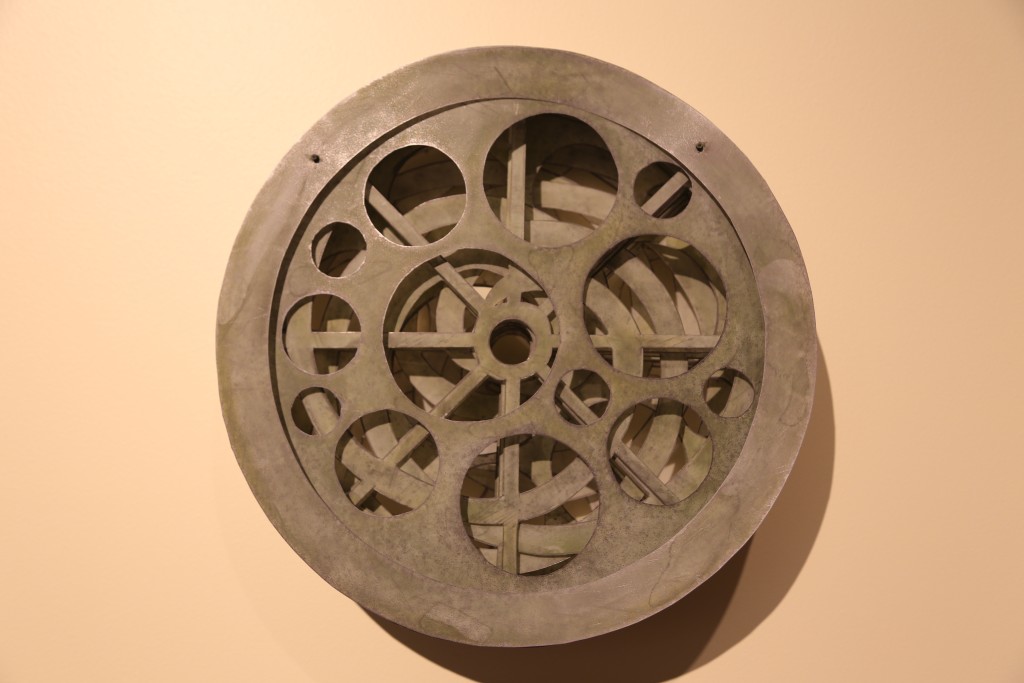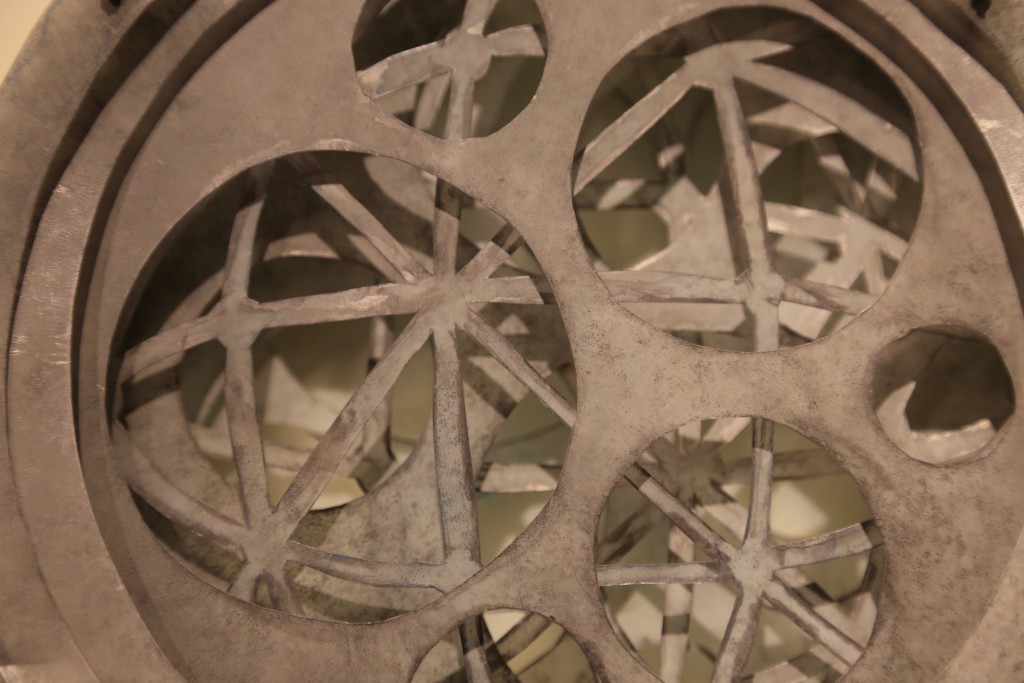I took a different route through Plaka to visit more sites, and I ended up climbing partially up the Acropolis hill and winding through a little neighborhood filled with cute little adobe-like houses that I associate with the Greek islands. Then I visited the Roman Agora, Ancient Agora, and Hadrian’s Library. The rest of the day was spent wandering through the National Gardens.
Author Archives: geek
Athens Day 3: Artifacts and More Ruins
I spent the majority of the day at the National Archaeological Museum, which has an amazing collection of artifacts. Being a nerd, the highlight for me was the Antikythera Mechanism. However the stone, pottery, glass, and metal artifacts were amazing too. I could have spent more time there, but there are only so many vases and sculptures I can look at in one time period.
A few photos of some of my favorite things in the museum, starting of course with the Antikythera Mechanism. After seeing it, I am very impressed with whoever made it and also with the modern scientists that have been able to understand what it did, at least on some level.
There were lots of metal sculptures and other items.
There was also amazing carved stone items.
The below was labeled as a bull figure. I think it looks like a cross between a seahorse and real horse.
Below may be one of my favorite pieces. Take heart all artists and craft people, especially if you are like me and go through many trials before getting something right, some day your failed pieces may end up in a museum!
This frying pan was labeled as something that would buried with someone. I would rather not be buried with a frying pan, no matter how pretty.
They were very big on the octopus in metal pieces and painted on pottery. I love cephalopods, so I thought this was really neat.
The roof spouts cracked me up.
This piece was labeled as “clay artifact in the form of bunch of breasts or multi-cluster fruit. Probably symbol of fertility.” When I first saw this, I thought it was supposed to be a bunch of grapes or perhaps a pine cone. No where in my guesses was bunch of breasts. I don’t know if that says more about my ignorance of artifacts, my imagination, or perhaps the thought process of the archaeologists studying this, whom I am going to go out on a limb and guess are mostly men.
Afterwards, I went to the Archaelogical site of Keramikos to view yet more ruins. This was a nice site because it was not jammed packed with people, and I could just wander around the ruins or really all the walls.
Athens Day 2: Ruins and Hills
I started off the day by hiking up Filopappou Hill because I heard it had great views. It does! You can see all the way to the sea to the south, and it allows wonderful views of the Acropolis as well as most other parts of the city. While up there, I saw the Filopappos Monument and did a little birding. Then I pushed on to see as many historical sites as possible including Theatre of Dionysos, Hadrian’s Arch, Temple of Olympian Zeus, Panathenaic Stadium, and a few smaller ones that are scattered everywhere. I am not kidding about this. You turn a corner, and there is a very small archeological site. I walked into a store selling everything made from olive wood and realized I was standing on a glass floor and below was ruins, complete with a sign describing them.
It was rather fun to get to wander around Panathenaic Stadium because it was used for the Olympics, yet it is a historical site with stone seats, some of which look like the stone seats at the Theatre of Dionysos. As an engineer, I am in awe that these structures have lasted so long. Some have had to be restored, and the Acropolis is currently case in point. As much as I would love to get photos of it unobstructed from construction equipment, I am kind of amused to see this ancient engineering structure being restored with modern engineering.
Athens Day 1: Plaka
I got to my hotel a bit before 5 pm, and even though I got no sleep on the plane, I headed right back out to walk around the city a bit. I mainly walked around Plaka, which is one of the old sections of town. I have decided it is not possible to see Athens without getting lost in Athens, or at least in Plaka. I thought Boston had crazy streets, but I don’t even know what was going on in Plaka. Luckily there are monuments or ruins every other block. I would get lost every third block or so because I could never figure out what street I was on, but I only had to walk a few blocks before running into another ruin or monument, so I could quickly figure out in general where I was again using a tourist map. To a certain extent, I was just looking around buildings to find where the Acropolis was, and then used that to navigate directionally. Also, the sidewalks are tiny, so people walk on the streets, but the scooters also drive on the sidewalks, so that seems fair. Cars also drove down alleys that it was not clear to me were actually streets, but evidently they were. I already love this city though. I got lost, but it is just a glorious city in which to get lost.
Building a Spice Rack
Here is the back story. The above photo is a spice rack I bought at IKEA. It was raw wood, and I painted it to match the wall. My initial intention was to see if I liked it there, then buy two more to place on either side if I did. I decided I did like it, but when I went to go buy two more, I couldn’t find them anymore. Then I realized, well this is stupid, I can just build a spice rack. Thus without further ado, how I built a spice rack.
The building supplies consisted of two primed, composite wood 1 x 4’s (which are really 0.75″ x 3.5″), primed 0.25″ x 0.75″ shoe molding, flat head screws, and wood glue. I cut the wood planks to fit the length of the wall, and I cut the molding into three pieces, one, the length of the planks and two, the length of the depth of the planks. Then I mitered the molding. The molding will serve as a shelf stop to make sure nothing falls off the shelf, in theory at least.
First, I joined the two planks to form an “L” shape.
I used screws to attach them together. Before inserting the screws, I pre-drilled holes and also pre-drilled a larger hole the size of the screw head at the very top of where the screw would go, so that the screw head would be recessed into the wood. The side where the screw head is, will be the top of the shelf, and plank perpendicular to it will be the way I attach it to the wall.
Then, I glued the long piece of shoe molding to the top of the plank, on the opposite side of the perpendicular plank.
I then glued the two small pieces of shoe molding to the ends of the planks to complete the shelf stops. I used painter’s tape to keep the molding in place while the glue dried.
Once the glue dried, I then used spackle to fill in the gaps and also the indentions where the screw heads are to make the shelf look more like one finished piece.
I then painted the entire piece with the same paint that I used to paint the wall. Obviously it could be a different color, but I like how it seems to just be part of the wall when it is the same color and not some attention grabbing piece. I then hung it on the wall using more flat head screws that I screwed into the studs.
I then filled in the volumes above the recessed screw heads with spackle.
Finally, I sanded the spackled areas and painted. Below, my finished, custom built spice rack.
Being #DistractinglySexy
So here is the summary that you have probably have already heard, Tim Hunt, a Nobel laureate scientist made some very sexist remarks to of all people, a group of female scientists and engineers. He stated men and women shouldn’t work together in the same lab because when they do, you fall in love with them, they fall in love with you, and they cry when you criticize them. I think the man thinks a bit too highly of himself that any women he works with would fall in love with him.
The reaction mocking him, especially on Twitter, has kept my faith in humanity. Women have been tweeting photos of themselves working in the field and lab. Showing how distractingly sexy they are. I tweeted two photos of myself from HAZWOPER training, once in Level A PPE and one in Level B PPE.
Yes I know I am #distractinglysexy in my Level A PPE. The suit totally flatters my curves. pic.twitter.com/LUb5nXx9yO
— Geeky Girl Engineer (@gkygirlengineer) June 11, 2015
Here I am again being #distractinglysexy in Level B PPE. Because who can’t resist a girl with her own supplied air? pic.twitter.com/uCAwdtOm6R
— Geeky Girl Engineer (@gkygirlengineer) June 11, 2015
Those tweets have proved quite popular with the Level A photo thus far getting over 1100 retweets, and the Level B getting over 360 retweets. The tweets have been featured in articles in Buzzfeed, Washington Post, Salon, and Huffington Post UK. The whole thing has been rather surreal honestly. I have been contacted my media outlets to comment. I haven’t, partially because of timing and such.
I don’t even have any photos of me really working in the lab or field that would demonstrate how real work is the complete opposite of distractingly sexy. Well, I guess everyone find different things sexy, but get real. In the first part of my career I worked as a consultant. Typical field work included environmental site assessments where I was directing drillers to get soil and groundwater samples. Gloves, steel-toed boots, jeans, and a t-shirt that was likely going to get dirt on it were my “sexy” look. Then there was the time I was helping to sample a malfunctioning aeration chamber at a wastewater treatment plant in 95°F heat. [The aeration chamber is generally the start of secondary treatment, and thus there should be little to no smell. As this was malfunctioning, try to imagine the smell of raw sewage cooking in the heat.] If you find that situation sexy, well, I don’t think I want to meet you. Then there was the time I was checking on a pilot water treatment plant. Mainly it was a whole lot of sitting around, taking notes, checking valves, and taking some samples by myself. Normally field work involves a lot of sweating really. However, there was one time I was working in the field, again getting soil samples, in New Jersey in the dead of winter. There was no sweating or falling in love. There was just me freezing my butt off and making sure the security guards were in sight. That was a fun job; it was the only time I’ve ever been in a location where safety from crime was an actual issue. Normally the safety issues are the more mundane moving parts, heat, sun, fire ants, and then the one rattlesnake. God bless Texas.
When I was a Ph.D. student, we did our field work at auto body shops measuring the exposure the painters received to a chemical in the clear coat. Basically the shops were loud and smelly with really fun chemicals, and we sat around all day collecting personal air samples, tape strips from their skin after painting, all the urine we could get, and blood at the end of the day. In the hot months, there was sweating. In the cold months, there was shivering. At what point would we be distracting each other with our sexiness? Would the latex gloves and respirators, be the cause? No doubt the painters were falling in love with me because I kept trying to get them to drink more water and begging them for more urine. After the field work was done, I spent the better part of two years or possibly more in the lab analyzing all the urine samples. I analyzed over 400 urine samples, and the analysis was a three day procedure. The first part of the analysis involved adding concentrated sulfuric acid to the urine and then heating it for four hours to 100°C. Yes, nothing says distractingly sexy like urine cooked with acid. Luckily, the lab has hoods and other ventilation methods. Oh, and I shouldn’t leave out the part of asking my lab mates for their urine at times because I used that as unexposed urine from which to make my standards. How I did not fall in love with them while they handed me cups of their own urine, is anyone’s guess.
Now, I mainly work in an office. I get into the field every once in a great while. The photos I tweeted are from training, and I have never actually worn that level of PPE for real work. However a couple of weeks ago, I got into the field, and got to help sample fish, then watch a biologist sample them. I did not in fact fall in love with the biologist when he was filleting the fish.
Mouse Hunt
I have two cats, Feste and Orsino, and Ferdinand the basset hound. The good news is they all get along. The bad news is they all get along. The get along so well they are a hunting pack. The good news is they keep the house free of pests although not so much the insects. The bad news is the only reason some of the pests are in the house is because some member of the hunting pack brought it in through the pet door. Normally they like to bring their trophies to me live. If I realize a prize has been brought in early enough, I can usually catch the prey and release it back outside relatively unharmed. Otherwise I’m on past prey patrol. Voles, moles, and mice are the main prey. Once in Texas, Puck the cat brought me a lizard. I’ve seen one dead bird. Luckily no snakes. Ferdinand the basset hound takes the prize for once while we lived in North Carolina bringing me an adult live opossum. He dropped it off in my bedroom. Wasn’t I impressed? No, I screamed like the girl I am. Eventually I got my wits about me after calling my mom in Texas, which of course was going to help somehow. She told me to call 911 because well it probably wouldn’t be the stupidest phone call they ever got. [Side note: I did call 911. Orange County North Carolina probably doesn’t get that many phone calls expect for drunks on Franklin Street in Chapel Hill. In fact in Orange County you are supposed to call 911 for wildlife emergencies which is my justification for calling them. A very nice operator told me they would come help for wildlife that can carry rabies. Turns out opossums have too low a body temperature to carry rabies so all he could do was give me the phone number of a animal removal company. Still, good to know about opossums and rabies.] Anyway I finally calmed down. The opossum kept playing dead while both basset hounds and both cats kept watch to see if it would move again. I managed get a large trash can over it and pushed it down the hall and out the front door all while I was trailed by my hunting pack. After safely closing the door, I watched the opossum finally realize it was free. Before walking off, it looked at me as if to say thanks and possibly give me the middle opossum finger. I then went to go find a very large glass of wine.
This morning I heard the warning signal of both Feste and Ferdinand running across the living room. The I heard a squeak. I investigate, and both of them are staring intently at something. Great. It’s a mouse. It runs. Feste catches it in his mouth. Lets it go. Ferdinand catches it in his mouth. Lets it go. Repeat. Repeat. Repeat. Finally, Feste grabs it in his mouth and runs downstairs into my office. I then spend the next 20 minutes trying to catch the poor mouse that is trying to figure out how to get out while Feste mainly watches. Several times I would get close to getting a container on top of the mouse, and it would run to Feste for protection. I kid you not, it would run to Feste who would shelter the mouse in between his front legs. They would just look at each other. The mouse would move away. Feste would bat at it a little. I would try to catch the mouse. Repeat. Finally the mouse ran out into an open location where I could get a trash can over it. I got the trash can over it, turned it over, and got it out the front door. Then it took me a few minutes to get the mouse to finally leave the trash can. I kept telling it to be free. I have to go to work. Look there are nice plants and leaves for you to hide in. Be free. It finally did as I asked.
Sampling Fish
Recently for work I got to help out in the field taking samples to quantify environmental contamination. Some of the samples we were taking were fish tissue to measure the levels of polychlorinated biphenyls (PCB) in them. The fish live in a river that was contaminated decades ago. The sampling results will be used for fish advisories and also to determine a clean up plan.
Sampling fish starts with the really fun part, which is cruising on a small electrofishing boat. Electroshocking the fish allows you to catch them alive and throw back any fish we didn’t want. We had target fish we were trying to catch to sample, and those were the only ones we kept, and we only the number of target fish we needed. The electroshock sort of stuns the fish but doesn’t kill them. The electrofishing boat has two long poles with anode wires hanging off of them protruding from the front of the boat. There were more wires hanging from the bow of the boat, and those are the cathodes. The electricity flows from the anodes to the cathodes. We stood at the front of the boat in rubber soled boots with nets extended waiting to catch any fish stunned by the electroshocking. Netting electroshocked fish is not actually as easy as it sounds. Some of the fish are more stunned than others, so some fish seem slightly confused but then swim away. Also, some were stunned but at a depth too low or cloudy for us to catch or see. According to the boat’s captain, the water had really low conductivity, which was making it difficult. Since we had target fish we were trying to catch, I, naturally, kept catching fish we didn’t want. I threw a lot of fish back. Still, a day on a boat catching or not catching fish was a wonderful change from the cubical I normally work in. Also, I learned that you really need polarized sunglasses when out on the water.
Once we got the fish to shore, the biologist took over. The fish were weighed and their length measured. He took a a sample of their scales from a standard location, and those scales were going to be used by a laboratory to determine their age. Evidently scales can be used to age fish in the same manner tree rings age trees. WARNING: If you are uncomfortable looking at the insides of fish, do not read any further. You should probably not eat fish also, if you can’t look at an uncooked one.
The rest of the scales were then scraped off. The fish were then cut. Only the fillets were used for sampling. The part of the fish used for sampling can differ depending on what the exposure pathway being examined is. We took two different parts: the filet, which represents what a human would normally eat, and also the fillet with rib meat. The rib meat is normally not eaten, but it would have more PCBs in it, so using it in the sample would represent a worse case scenario for a human consuming fish.
I also learned a bit of fish anatomy during the sampling. The biologist was also sexing the fish.
We weren’t necropsying the fish, but we still got a look inside, including sometimes as to what it had eaten recently.
We sampled quite a few fish, but it was for science and to benefit the community.
Street Excavation
Early in my career as an environmental engineer, I sometimes did field work that involved soil and groundwater sampling. The type of soil sampling I did used shallow coring down to about 15 or 20 to obtain different depth soils to analyze for contamination. Number one rule before coring or digging for any reason, is to have all the utility marked. Most, if not all, states have a single number you can call and request the utility companies come out and mark where their underground pipes, wires, or whatever are. They would come and spray paint lines to denote their utilities, and then the drillers and I would know to avoid those areas. The sites I worked out were fairly simple, and avoiding utilities was pretty straightforward. Then there are old, densely populated cities like New York. I have never done any type of digging in New York City, and I hope I never do. The underground is a maze of pipes and wires and then below that are subways and basements and who knows what else.
I went to New York City this past Saturday. While walking around, I passed an area where the street had been excavated for utility work of some type. There were four guys cutting holes in a large diameter metal pipe. I asked one of them what the pipe carried, and he said it was for gas, but it had not been used in a long time. Because I am an engineering nerd, I of course had to take a bunch of photos, and what I saw confirmed my desire to never do any digging work there. My hat is off to the people who do. They must have to do the digging by hand, possibly with a tablespoon to get around all the pipes. The shoring looked like some crazy Tetris scene trying to put the beams around the pipes. The guys cutting the pipes had barely any room to work and that is not mentioning how they were bending down to cut.
So if you were ever curious just what types of utilities are below the streets of Manhattan, see below.
Rebecca Kamen: Fundamental Forces
Currently on display at the National Academy of Sciences is Fundamental Forces by Rebecca Kamen. Fundamental Forces is an exhibition of paintings and sculptures inspired the process of scientific discovery. The title Fundamental Forces refers to fundamental forces in physics: gravity, electromagnetism, and strong and weak nuclear interactions, and in my opinion, the exhibit really does provide a lovely representation of those fundamental forces. I loved the wire sculptures in particular as they were visually interesting and also looked like things I had studied in chemistry and physics class. Matter Informing Space reminds me of the Bohr model of the atom. The Doppler Effect is an interesting visualization of the Doppler effect, but it also reminds me of a vortex and the Coriolis effect. The sculptures also play with the light in wonderful ways. The shadows created by the wire sculptures and also Portal are incredibly interesting. If you are in the DC area, the exhibit is open until July 6, and it is free to see, so go.

